C CATHEDRAL MUSIC



























With the recent acquisition of Copeman Hart & Company Ltd by Makin Organs, as a combined company we now offer the best of both worlds with the foremost sampled sound technology from Makin and Johannus and real-time computing from Copeman Hart. No other company offers such a broad range of products covering all technologies. Our customers are now in a unique position in that they can choose anything from a simple home practice instrument through to the largest of cathedral organs. Please take the time to visit us and browse our websites, we don’t think you will be disappointed.



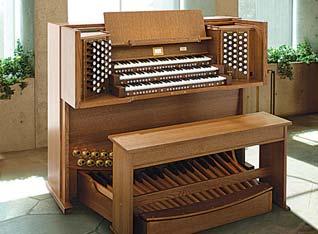

www.makinorgans.co.uk





www.copemanhart.co.uk







For more details and brochures please telephone 01706 888100


CATHEDRAL MUSIC is published twice a year, in May and November
ISSN 1363-6960 NOVEMBER 2012
Editor Mrs Sooty Asquith, 8 Colinette Road, London SW15 6QQ sooty.asquith@btinternet.com
Deputy Editor Roger Tucker
Editorial Advisers
David Flood & Matthew Owens
Production Manager Graham Hermon FCM email info@fcm.org.uk Website www.fcm.org.uk
The views expressed in articles are those of the contributor and do not necessarily represent any official policy of Friends of Cathedral Music. Likewise, advertisements are printed in good faith. Their inclusion does not imply endorsement by FCM.
All communications regarding advertising should be addressed to:
Roger Tucker, 16 Rodenhurst Road, London SW4 8AR
0208 674 4916 cathedral_music@yahoo.co.uk
All communications regarding membership should be addressed to: FCM Membership, 27 Old Gloucester Street, London, WC1N 3AX Tel: 0845 644 3721 International: (+44) 1727-856087 info@fcm.org.uk
Every effort has been made to determine copyright on illustrations used. We apologise to any individuals we may have inadvertently missed. The Editor would be glad to correct any omissions.
Designed and produced by MYPEC
Beech Hall, Knaresborough, HG5 0EA 01423 796262 info@mypec.co.uk www.mypec.co.uk
Cover photographs Front Cover Truro Cathedral ©
5
6 Two Choirs under one Roof: Music at Cambridge’s Jesus College Mark Williams talks to Sooty Asquith
12
16
22
26

















































































At the recent Lincoln gathering in October this year I took note that there were one or two grey heads present, and it occurred to me that the following might be relevant. Did you know that since April 2012 a reduced rate of inheritance tax (36% instead of 40%) can now apply to most people who leave 10% or more of their estate to charity? The maths is compelling and straightforward: your beneficiaries will only be slightly out of pocket, but your good cause will be significantly better off. If you are not already leaving this amount to charity (and few, it seems, are) you would of course need to update your will or add a codicil. Apparently 35% of people say they’d happily leave a gift to charity in their will once family and friends have been provided for, but only 7% actually do. Writing a will isn’t something one does very often, is it? And when even looking up the solicitor’s name and telephone number seems to cost money, it becomes less attractive still. But consider perhaps the good and continuing use to which a legacy can be put by FCM – supporting choristers, lay clerks, choral foundations, organists etc – even after you are no longer present; it would be worth the effort, wouldn’t it?
There is frequently talk about the hugely important subject of increasing our membership, and of how we can make
people more aware of FCM and its purpose. Cathedral Voice recently listed a collection of useful ways in which others could be recruited to the cause, and I would particularly like to emphasise the passing on of this magazine when you have finished with it. Don’t simply recycle it but hand it on to friends, to anywhere with a waiting room, leave it on the table at the back of a church you’ve never been to before, or offer it to the manager of your local cathedral shop in the hope that they may take extra copies to sell. Widen the circle. Future members will thank you.
And now Christmas approaches. The organised souls will have already bought their cards, but for those whom Life occasionally ambushes from behind – don’t forget that you can still buy FCM cards in a fine choice of different designs.
You will also find included in the pages of this magazine a brand new FCM recruitment leaflet. Please do consider carefully how best you can make use of this and do not simply ignore it or consign it to the waste paper bin. Encourage your friends to join, or, perhaps, give FCM membership to a lucky person as a Christmas present.
Sooty AsquithLog onto www.fcm.org.uk and fill in the form, or write to/email the address given on p3.
Member benefits include:
• welcome pack
• twice-yearly colour magazine and twice-yearly colour newsletter
• ‘Singing in Cathedrals’: a pocket-sized guide to useful information on cathedrals in England, Ireland, Scotland and Wales
Opportunities to:
• attend gatherings in magnificent cathedrals
• meet others with a shared interest in cathedral music
• enjoy talks, master-classes, choral and organ performances etc.
UK members are asked to contribute at least £20 per year (£25 sterling for European members and £35 sterling for overseas members). UK choristers and full-time UK students under 21 qualify for a reduced rate of £10. New members subscribing at least £30 (standing order) or £50 (single payment) will receive a free fulllength CD of cathedral music, specially compiled for FCM members.
FCM’s purpose is to safeguard our priceless heritage of cathedral music and support this living tradition. We strive to increase public awareness and appreciation of cathedral music, and encourage high standards in choral and organ music. Money is raised by subscriptions, donations and legacies for choirs in need.
Since 1956 we have given over £2 million to Anglican and Roman Catholic cathedral, church and collegiate chapel choirs in the UK and overseas; endowed many choristerships; ensured the continued existence of a choir school, and worked to maintain the cathedral tradition. Please join now and help us to keep up this excellent work.


Dating back to the foundation of Jesus College at the end of the fifteenth century, the choir of men and boys has a long history. The chapel and its worship had fallen into a parlous state by the middle of the nineteenth century and Augustus Pugin was employed to restore the building (which in parts dates back to the twelfth century) while Sir John Sutton, a Fellow Commoner, commissioned J C Bishop to build a new organ, and re-established a school for the education of choristers. In due course the choristers came to be recruited from local schools, and that remains the case to this day. When, in 1979, the college admitted women undergraduates for the first time, it was felt that they ought to be given the opportunity to play their part in the chapel worship. Nobody wished to see the choir of men and boys dissolved, and so the chapel became the first of any Cambridge college to have two choirs; they share the weekly services between them, and come together for occasional special events, concerts and tours. Today, the Chapel Choir of men and boys sings Evensong on a Thursday and Saturday whilst the College Choir of male and female undergraduates sings the services on a Tuesday and Sunday.
There are currently 23 boys singing as probationers and choristers at Jesus. They come from fourteen different schools in the Cambridge area and a number travel from quite far afield. It is, of course, unusual to have so many choirs of men and boys in such a small area (Ely is very close by too) but King’s and St John’s, equally long-standing choral foundations, offer a very different experience, with their choristers boarding and rehearsing daily, performing to an extraordinarily high standard day in day out, broadcasting regularly both nationally and internationally. They are not seen as competition: Jesus offers boys the chance to become a part of the life of a Cambridge college whilst still living at home and attending their own schools. Boys come to choir in the way that they might go to football practice, and Mark Williams, Director of Music at Jesus since 2009, hopes that they feel as passionate about singing as they might feel about sport or any other activity pursued outside the school walls. Beyond the musical benefits, which are selfevident, parents appreciate the emphasis on teamwork, discipline, personal presentation and commitment that are intrinsic to what Jesus Chapel Choir does, whilst the boys themselves value the opportunity to perform at a high level with
talented students in a beautiful and ancient building. One of the most rewarding aspects of the job for Mark is seeing the boys arrive at a rehearsal straight from school or a football match and watching their faces light up as he announces that the first anthem is by Tallis. Of course their faces light up even more when they receive their termly pocket money! As one of the smallest ones said to Mark with surprising honesty when he was asked why he’d joined the choir, “I was really only interested in the spending money, but I have to admit I do quite like singing now!” On recruitment Mark says, “We have been fortunate to have good numbers auditioning in recent years, but there’s no relying on that, and so we continue to work on recruitment and outreach, holding Singing Days and visiting local primary schools.”

Funding for tours (to the USA, France, Germany and the Ukraine in the three years that Mark has been at the college), recordings and major concerts with orchestra comes mainly from donations. The choir has performed with the Britten Sinfonia and other highly regarded ensembles, and there are plenty of other exciting projects planned for the future. A number of former students of the college and others have chosen to support the chapel in this way, and – thanks to the kindness of a former student – choristers receive contributions towards the cost of instrumental tuition.
Jesus is blessed with no fewer than three organs. The Sutton Organ was installed in 1849 and the case, painted by Pugin, is extremely beautiful. It has recently been restored to its original state by William Drake and is a wonderful historic instrument, used from time to time in repertoire from the seventeenth, eighteenth and nineteenth centuries. The Hudleston Organ was built in 2007 by Orgelbau Kuhn of Switzerland and is a triumph of modern organ building. It is used for the majority of service accompaniment and is a versatile instrument, well suited to repertoire from all periods and countries. In 2010, a third member of the organ family arrived: the Rawlinson organ, built by Kenneth Tickell, is a chamber organ of just three stops which can be wheeled into the choir stalls to enable the organ scholars to accompany the choir ‘at ground level’. Mark believes this gives them invaluable experience in listening and in understanding ensemble issues, particularly in music from the sixteenth and seventeenth centuries to which the instrument is best suited. Furthermore, the college has recently commissioned and taken delivery of a magnificent double harpsichord after Zell (1728), built by Bruce Kennedy in Tuscany.
Mark himself spent a year as Organ Scholar at Truro under Andrew Nethsingha and Simon Morley. He much enjoyed having unlimited practice time on the magnificent Father

Willis organ and, beyond the many benefits of spending a year focusing on his playing without administrative or academic responsibilities, also learnt a great deal about working with children through living at Polwhele House, the cathedral’s choir school. He went on to be Organ Scholar of Trinity College Cambridge which, with its choir of male and female students trained by Richard Marlow, was a very different kettle of fish. The choir’s vast and varied repertoire, its exciting touring and recording schedule, and the peerless Metzler organ made for a highly rewarding three years.
After Cambridge he spent six years at St Paul’s Cathedral, combining his role in the cathedral with the post of Director of Music at the cathedral school. It was a demanding but fulfilling period in his career: “I have many happy memories of my time working in that great building and playing that magnificent organ for national occasions and for daily services, learning so much from the peerless John Scott and his distinguished successor, Malcolm Archer,” he comments. He gave up the post in 2006 and for three years pursued a varied and busy freelance career, travelling around the world performing with orchestras, giving recitals, recording, playing for film scores, teaching music to opera singers and writing arrangements for pop groups. “That was thrilling,” he says, “but the post at Jesus has given me the opportunity to pursue
some of this freelance work as well as my work with the choirs, my teaching and my playing.”
Both choirs are in Mark’s care at Jesus, which he views as “the most challenging and the most rewarding aspect of being Director of Music here”. The two choirs have developed their own characteristic sound and repertoire and he enjoys the variety a great deal. Bringing the two together for recordings, concerts, tours and special occasions makes for a very exciting sound and a special sense of community. There are also two organ scholars at any one time and Jesus boasts a long and distinguished list of these, including numerous cathedral organists such as Peter Hurford, Richard Lloyd, Malcolm Archer, James O’Donnell, Geraint Bowen and Charles Harrison. The two current incumbents – Robert Dixon and Benjamin Morris – are both talented musicians and fine players. In addition to accompanying and, from time to time, directing the choirs, the organ scholars assist in the training of the choristers, working regularly with the probationers and teaching music theory to all the boys.
All the adult members of the choir, including the organ scholars, are students at Cambridge University, studying a wide array of subjects including Classics, Engineering, English, History, Medicine, Modern Languages and, of course, Music. There is a small number of choir members who are graduates

or volunteers from other colleges, but of the 28 members of the choir, 22 are undergraduates at Jesus College. The workload for the gentlemen is twice that of the ladies, but Mark feels that the men enjoy the opportunity to sing separately with both boys and with women – the two experiences are very different. Equally, the female choral scholars enjoy the chance to be part of a thriving musical scene whilst also having time to pursue other activities, musical or otherwise.
It was in 1998 that the college appointed its first Director of Music, Timothy Byram-Wigfield, who was followed by Daniel Hyde, and it was under these two distinguished musicians that the choirs began to record for Priory, Regent and Naxos. The choirs’ first recording for Signum Classics – Journey into Light (released in September 2012) – is a disc of music from Advent to Candlemas, with a number of pieces sung by the combined choirs, including a work commissioned for a recent visit to the USA by the talented New York-based composer, Nico Muhly. Earlier this year, the choir recorded a disc of music for Remembrance, including favourites by Ireland, Vaughan Williams, Harris and Parry, alongside less familiar pieces by James MacMillan, Matthew Martin and Arvo Pärt.
Mark says that he enjoys performing as much as possible outside the confines of the university, and believes that spending time practising solo repertoire and, perhaps more importantly, performing as a continuo player, organist or conductor with professional ensembles broaden his experience in a way that can only be valuable to his work with the students and the choristers. “It’s a teacher’s way of learning, and so I am delighted that I still have the opportunity to perform with a number of early music ensembles as organist and harpsichordist. I also play voluntaries regularly after services in the chapel here, and from time to time accompany services directed by the organ scholars, as a reminder to myself of what I put them through on a daily basis! My next organ recital is in the USA, but I enjoy performing nearer to home too.”
Mark teaches harmony, counterpoint and keyboard skills to students from Jesus and a number of other colleges at undergraduate level and is also involved in some teaching for
the graduate M.Mus course in Choral Studies. “It’s a real pleasure,” he says, “to be able to play a part in the growth of these young musicians academically as well as practically. It would be easy to treat them as young professionals during rehearsals and services, but it is to study for a degree that should be their priority, and teaching both choir members and other students reminds me of that. It also fills me with great admiration for choral and organ scholars across the university who perform at a high level academically whilst also singing beautifully, preparing their music, performing with jazz bands, playing for the hockey team, acting on the stage of the Arts Theatre, baking cakes, doing yoga and leading full and busy social lives. I don’t know when they sleep!”
The combined choirs have, as readers of Cathedral Voice may remember, recently visited the USA. Their successful concert tour of the East Coast of the USA in December 2010 was overshadowed by snow at Heathrow, which meant spending an extra few days in Washington DC, most of which was taken up with giving interviews to American and international news channels! “It is perhaps that part of the tour that will stay with all of us,” Mark thinks, “in particular the generosity and warmth of so many people who looked after us in the week before Christmas when they had plenty of other things to do.” Singing in St Thomas Fifth Avenue, in St Bartholomew’s Park Avenue (which the choristers recognised from several films) and performing impromptu carols for the Governor of Virginia and his cabinet at George Washington’s home at Mount Vernon were just some of the highlights of a memorable trip. This Christmas the combined choirs return to the USA, visiting the West Coast to perform in Seattle, Portland (Oregon) and San Francisco. Is Mark tempting fate? “I certainly hope not,” he replies.
Any final thoughts? “It is an extraordinary privilege to live and study in this beautiful place, in the presence of so many great minds and with former students such as Cranmer and Coleridge looking down on you from their portraits on the walls,” Mark says. “It’s an environment that fosters creativity, intellectual curiosity and sociability in a unique and special way, making it an exciting place in which to make music and a wonderful community in which to live and work.”

“Collier, would you like to join the choir?” were among the first words I encountered upon joining Berkhamsted School at the age of 10. They were spoken by the Director of the Chapel Choir, Philip Coates, somebody who proved to be a huge influence on the rest of my life. “No, sir, thank you, I don’t. I want to play football and cricket on Sundays when you have choir practice.” Well, the upshot of all this was that I did join the choir, I thoroughly enjoyed it, and Philip Coates, realising I had potential, trained my voice to a remarkable standard. The drug had been taken, initially as a bitter pill, but eventually leading to my life’s work when Priory Records was formed in 1980. Previous to this (upon leaving school) I had gone straight into industry to train in sales and marketing, and again this was a vital step in securing a successful long-term future for Priory.
The formation of the company was quite by chance. I met Paul Crichton (pictured above), who was head of sound at Central Television, in a pub, and after discovering our mutual interest we decided we would dip our toes in the water and try

to make some private recordings. He emphasised, though, that he only wanted to make the recordings and that I would have to find the business. It was very hard work; no contacts, just a typewriter, and visits to local churches to obtain contact details of choirmasters and organists. I wrote to as many as I could, in between working for a furniture company as my full-time job. Slowly but surely in those days of the vinyl LP (yes, the black round object that clicked and popped and suffered from end of side distortion) we managed to get a few local recordings, pressing 250 or 500 discs. Recorded on a Revox A77 tape recorder, we edited the master (only managing this within pauses in the music), designed the sleeve, cleared the copyright and pressed the LPs. We enjoyed a certain amount of success, and ploughed back any small profit into the business.
Fast forward to 1988 (not on a tape recorder, though, but on much smaller digital FI equipment). The business had developed quite markedly, in that we were making commercial recordings for CD. The LP had all but disappeared, and having sat through countless recording
sessions with Paul Crichton, he could not cope with the amount of editing he was undertaking for Priory and combining it with his TV work. He therefore said to me that, if we were to continue, I would have to make the recordings as well as sell the product, while he just did the editing. This is what happened and still does today. However, a similar problem to Paul’s also faced me. A full-time job and the development of Priory all at the same time. Something had to give, and with great relish I quit my sales job.
We have never really looked back. The new regime of my running the company, selling the product and making the recordings worked well. Until this time, product had been stored at my home, at my aunt’s home and indeed any ‘home’ I could find. Again, it was time for change and I rented premises to store the expanding catalogue, and also some offices not far away. The business was developing at a fast rate and by 1995, at the height of the CD boom, I had seven people working for me.

Perhaps at this point I should explain why we had not appointed a distributor to sell our products in order to leave us time for marketing. When Priory made its first commercial recording in 1982, I went to a leading distributor at that time proudly brandishing the first two releases. Sadly I was informed that I would be considered when I got a minimum of 12 in the catalogue! Help! That would take ages and how was I to sell what I had already? Quite simply, I put the boxes in the boot of my car and visited all the classical music shops I could find countrywide, combining this with the selling visits of my fulltime job. With this excellent coverage of the country, I was approached by other labels to distribute for them. We took them all on when I left my job and became distributors as well as having our own label. This we still do today.
By 1991 the CD was motoring. We were distributing for over 30 labels and it was necessary to move again, this time close by to new offices and warehouse facilities in Wingrave, Buckinghamshire. We employed a salesman, who called on retail outlets and cathedral shops, a designer for CD booklets, a warehouse supervisor and packer and, of course, an accounts and marketing person (Callum Ross joining me in 1997) as well as maintaining Paul on the editing and post- production.
We recorded a best-selling set of all the psalms with 10 different cathedral choirs, a comprehensive set of 21 CDs featuring settings of the Magnificat and Nunc Dimittis, and another of Great Cathedral Anthemsas well as many, many more. Now this sounds as if Priory Records is all about choral music, but, of course, we were famed for our Great Cathedral Organ series and for recording music for the very first time, music that was completely new to the organ music catalogues. Priory became an international company and is recognised as such. We have recorded all over the world and brought organ music to the homes of thousands of people in such diverse places as Singapore, the USA, Iceland, New Zealand, Australia, South Africa, the Canary Islands, Malta and the Balearic Islands, as well as countless venues across Europe. No other specialist company in this field has ever come close to providing the wealth of traditional church music recorded by Priory. We are often asked how we record organs and choirs. The answer is simple – with a single point microphone, which has four capsules pointing in different directions. We aim, and I think succeed, in providing the listener with the best seat in the house. If this means stringing him up 50 feet in the air or placing her in the front pew of the church we will achieve this. We work on the proviso that we only have one pair of ears and therefore multi-miking is not necessary or ideal, as long as the organ or choir balance. The results are what one might call an organic sound that is honest and faithful to the ambience of the building, and captures the artist(s) naturally. It is strange how many choirmasters are still impressed by the engineer who has a vast array of buttons before him, flashing lights, multiple microphones and stands, and cables running to every point of the building. When these are unnecessary Priory does not use them. We are proud of how we capture our sound, and have won numerous engineering prizes and accolades, as well as supplying many CDs to top-end hi-fi shops for optimum sound demonstration.
Perhaps now is the time to look at the years from 1995 to the present day. Where have things changed and have they changed for the better? Where does the future lie and how are we planning for the years ahead?
Gone are the days of editing where the music had its natural breaks and we cut with a razor blade. Today our organists expect us to edit in the middle of a quaver, or at any point that they demand. We piece together the cathedral echo so that nobody can detect the breaks.
It is fair to say that the industry knew that the CD would not maintain its high volume of sales. However, we continue to offer music on CD, including a set of 542 hymns which make up The Complete New English Hymnal, our ever-expanding series of Great European Organsand the complete organ works of nearly all the major British composers who wrote for the instrument. Our catalogue also includes comprehensive complete cycles and rare or unrecorded music by French and German composers, including the complete organ works of Sigrid Karg-Elert, (probably 15 CDs by the time the series is finished) currently being recorded with Professor Stefan Engels, primarily in Germany.


Due to the early success of the Psalms of David, we are also presently recording a new set, in day/evening sequence but using different cathedral choirs and not (hopefully) duplicating any of the chants used before, either by us or by St Paul’s Cathedral in their own series.
Yes, the sales of CDs are falling, but we do not see the end of this medium just yet. After all, there is so much more to record – and I do not mean yet another cycle of the complete Bach or Franck organ works! Are recordings better today that when we started 32 years ago? Perhaps. The digital age has helped us. Computers dominate our lives, so much so that six hours of recordings can be stored on a flash card and around seventy on the internal hard drive. Gone are the days of editing where the music had its natural breaks and we cut with a razor blade. Today our organists expect us to edit in the middle of a quaver, or at any point that they demand. We piece together the cathedral echo so that nobody can detect the breaks. Indeed, the average listener today would have no idea just how many edits certain CDs have had! Clicks can be eradicated, hisses (from re-mastered LPs) can be lessened and extraneous noise greatly reduced or jettisoned. Almost nothing is beyond today’s editing wizards!
The future? Three years ago two things were decided at Priory. The first was that we would make our entire catalogue, currently standing at around 600 commercial CDs (we never delete any title), available for download. It took about two years to complete the required data spreadsheets, but now our music is available via iTunes, Amazon, Spotify and countless others. We have seen remarkable sales of downloads, but is this to the detriment of the CD? Are we robbing Peter to pay Paul? I do not know, but I have to say that this is not a medium I like. I prefer to see CDs on shelves, ready to hand. Sadly, quality seems to count for nothing these days. I still listen to my music on state-of-the-art equipment via loudspeakers, but for the younger generation this is not the case, as quality is of secondary importance. Compressed sound seems to be fine for most, listened to through cheap headphones.
The second major decision we made was to create a series of DVDs, not just featuring an organ recital but also including a demonstration of the organ and a visual tour of its environs.
There was only one place to start and that was with Professor Ian Tracey at Liverpool Cathedral! He was the ideal person to kick the series off. And so it proved, with his superb playing and wonderful commentary about the organ. Wow, did we see some sales! Indeed, all the releases to date (eight in total) – York, King’s College Cambridge, Lincoln, St Paul’s, Canterbury, Exeter and Salisbury – have been tremendous successes. Accolades have followed, King’s being DVD of the Month for August in Gramophone magazine – beating Leonard Bernstein’s latest reissue! It will come as no surprise that these DVDs cost five figure sums to make. We are recording them in stereo and 5.1 surround sound and they are filmed in high definition. This is where our technology is now ahead of the market, the problem being that in order to realise the potential of high definition pictures, they should be viewed on a BluRay player. Sadly, few of our customers have this technology, so they are not enjoying the picture quality to the full.
Priory is optimistic about the future. Our emphasis will still be on CDs, but we will also offer all our recordings for download. Our market has dramatically changed over the years: gone are those wonderful shops where you could browse and chat. However, Priory now has a presence in virtually every British cathedral shop in the UK, offering its own recordings as well as other CDs that interest tourists. This trade is buoyant and should be for the foreseeable future.
Finally – and we cannot get away from it – the internet. Priory enjoys healthy sales via the web. My son, whose company specialises in website-building, web design and ecommerce, has created a new site for us, unrecognisable from the previous version. As well as Facebook and Twitter, we now have our own internet radio station (Priory Radio) where a good selection of our recordings can be heard 365 days a year, 24 hours a day. This has been very successful, particularly because, as we all know, Radio 3 and Classic FM broadcast virtually nothing of this precious heritage of ours. So get listening, enjoy it all and please post any comments on our site as well as letting us have your suggestions on any related matter. We look forward to many more years of success, preserving the treasured national heritage that so many in the church seem to want to forget.


At school, Neil Collier’s fortes were sport and music – specifically singing, although he also played the violin and French horn (until his singing teacher decreed the latter incompatible with the development of properly rounded vocal chords). He became a keen record collector and sang in various choirs in the area. His first jobs were well away from music, though, in sales and marketing – first with Thorn Lighting, then Dreamland (makers of electric blankets) and finally Lancelot Furniture, where he became national sales manager. Singing with a choir in Hemel Hempstead during this period he met Paul Crichton, a sound engineer working for Central Television. The two found a common interest, became friends and started Priory Records

Simon Lindley pays tribute to Carlo Curley, who died in August just a few days before his sixtieth birthday.
Cathedral music appears in many guises – instrumental as well as choral. The greatest churches in our land regularly host concerts or recitals utilising the often magnificent instruments situated within their walls. Natural acoustics and the general ambience usually enhance the music produced, and the whole experience becomes the more memorable in consequence.
For exactly four decades following his first arrival here in 1972 from the USA where he was born, concert virtuoso Carlo Curley embellished such occasions and the lives of so many of us beyond measure by his playing, his entrepreneurial skill as a presenter, and – possibly most significantly of all – by virtue of the friendships he established and sustained for so long within the cathedral communities of so many foundations. The organists, of course, definitely; but vergers, stewards and clergy too all felt the easy warmth of his personality. He had many clerical friends and appreciated greatly the chance for conversation with them as well as with his musical colleagues –these valued occasions were often augmented by considerable quantities of good food and accompanied by gales of laughter, though perhaps they became rather more thoughtful and reflective as the years went by.
Notwithstanding the challenges of his health, Carlo was seen, and more importantly, heard on top form at Liverpool Cathedral with Ian Tracey in June and at the thirtieth anniversary recital on his friend Peter Collins’s organ at Cardiff’s St David’s Hall in July. He died not many days later, in Melton Mowbray, the Leicestershire town that he had adopted and that had taken him to its heart.
Looking back, his friendship with and tutelage from the legendary Sir George Thalben-Ball early established Carlo’s musical credentials with the general, as well as the musical, public, and memorable concerts often involving experiences with a touring organ in tandem with the building’s resident instrument became very popular. Co-operation with musicians of the calibre of Liverpool’s masterly Noel Rawsthorne, the mercurial Ronald Perrin of Ripon and concert organist Jane Parker-Smith were valued and vital components of the musical scene of the day; in recent years, his links with international artists of the calibre of Thomas Trotter and David Briggs have proved similarly fruitful.
Big-hearted and of substantial build, Carlo became known as the ‘Pavarotti of the organ’. There are not many organists whose deaths have made the editorial as well as the obituary pages of the national press, but Carlo made a big impact wherever he went. An Anglophile, certainly, but he was also a

great lover of Scandinavia and Australasia – Melbourne inhabitants, for example, proclaim him as the saviour of their Town Hall instrument.
His playing was enriched by formidable skill, a devilishly accurate pedal technique, a gentle touch, the ability to discover precisely the most piquant registration and by phrasing that was the envy of many colleagues. The formula for a Curley concert involved what was often a fairly set pattern; in that respect, he was rather like a master chef with the musical equivalent of table d’hôte spiced by an aural sauce or two. Bach he played in the grand manner, and Reger chorale fantasias similarly.
Carlo presented challenges for those who refuse to countenance the production of organ sound by anything other than wind-blown pipes. As a significant champion of digital instruments and artist of choice for Allen Organs for many years, he pushed out the boundaries of the instrument and virtually invented what has become known as the ‘organ gala’ or the ‘Battle of the Organs’ – one wonders how much valuable income for cathedrals and their music has been made by such means over the years of his playing on these occasions.
Listening to his detractors made one wonder whether perhaps criticism rode in tandem with a degree of envy at the measure of his public acclaim. For every twenty detrimental comments within and without the profession, there were probably twenty thousand souls who would provide a rapturous response to his artistry, commitment and brilliance. Furthermore, his autobiography In the Pipeline is a very good read and the well-thumbed pages of copies in public libraries provide their own testament to its popularity.
He embraced the video age and its potential wholeheartedly, and expanded our musical lives by means of a wide-ranging discography. Carlo was, too, a great lover of the Big Screen video that enabled distant audiences far away from cathedral lofts to see, as well as hear, him play. In recent years, fellow concert organist and friend Keith Hearnshaw worked indefatigably and highly effectively at Curley concerts with such installations.
Mention of his name invariably brought a broad smile to people’s faces. Did any personality you know ever have so expansive a signature? Carlo enlarged our lives beyond measure, delighted his audiences wherever he played, and was a very real ‘Friend of Cathedral Music’ – cathedrals here in Britain, of course, but also around the globe too.
We all miss him and, to use a term employed often by him about others, he was a treasure.

Iwas privileged to spend three years as one of George Howell Guest’s organ scholars towards the end of his 40year reign at St John’s College Cambridge. I know that hundreds of other former choristers and organ and choral scholars share my feelings of gratitude at the extraordinary experience of learning and performing with George. He was not only a great musician, but also a hugely inspiring teacher. His passion for and commitment to cathedral music transferred itself to ensuing generations, and it is no coincidence that many of Britain’s finest choir trainers were George’s pupils – Stephen Cleobury, David Hill, Andrew Lumsden, John Scott and the tragically short-lived Brian Runnett, to name but five. So many other professional musicians speak of the seminal influence that George had on them, from the international operatic baritone Simon Keenlyside to the Philharmonia Orchestra viola player Michael Turner.
The influence on me was equally powerful. When hearing the finest musicians, one sometimes feels that the music couldn’t possibly be performed any other way. Of course I was young and naïve, but when I worked with GHG it seemed to me strange that those of George’s protégés who now ran their own choirs didn’t attempt to make them sound exactly like George’s choir! Later, of course, I realised that there are many other styles and approaches which are equally valid – but such was the strength and conviction of George’s musical personality that this seemed unimaginable whilst I was working with him.
So what made up this distinctive personality? He created a unique treble sound which has never quite been recreated by anyone else (except that our current FCM President developed his own equally wonderful version of the Guest timbre, and David Hill later continued the tradition). Two of George’s influences were Boris Ord (at King’s) and George Malcolm (the originator of the ‘continental’ sound at Westminster Cathedral). Added to this mix was a red-blooded passion and insistence on emotion, perhaps related to George’s love of Welsh hymn-singing. George’s approach to phrasing was utterly his own and had a great influence on tone-colour and vibrato – every single note in a phrase had to have a sense of direction. He imbued an almost unbelievable musicality and sense of line in the choristers. I will never forget once being privileged to conduct George’s choir in Bruckner’s Christus factus est on a big occasion in 1990. In the last few bars I gave a particular gesture to the Decani boys, who responded with the most wonderfully musical vibrato on a particular B flat – all totally unrehearsed – and I marvelled that music-making could surely not come better than this. I remember thinking that conducting George’s choir on top form must be like conducting the Berlin Philharmonic! George showed genius in instilling such sophistication in young boys, and many other aspects of his sound were also distinctive: the Gents were always encouraged to sing out in an uninhibited way, and a very strong deep rich bass line was a particular feature.
GHG used to talk about the importance of using the eyes and the whole body in one’s conducting. He had the gestures and the rapport with his singers necessary to create moments of breathtaking beauty and spontaneity in performance. I remember occasions when one was reduced to tears in a concert by some rubato which he engendered in the whole choir, without it having happened in rehearsal. It is fashionable to say that a performer should simply be the vessel through
November 20th marks the tenth anniversary of the death of distinguished former FCM President, Dr George Guest, one of the greatest choir trainers of the twentieth century.Andrew Nethsingha © Paul Marc Mitchell
which the music passes between the printed page and the listener, and of course this is an admirable and important maxim, but I confess to loving performances which are full of the personality not only of the composer but also of the performer (if it is a great performer!). It was another part of George’s genius that he could bring such exquisite shape and beauty to even the simplest music, such as Psalm 23 or a plainsong Credo, and he also had the ability to make secondrate music sound much better than it deserved (!).
In some choirs one might learn the necessity of getting every detail in tune, in time, minutely balanced, every vowel sound unified, etc. All these things were taught at St John’s too, but we also realised that by far the most important aims were to communicate emotionally with people, to express the inner meaning of the words (George could recite the entire psalter from memory from an early age), to move the listeners, and to bring them closer in their relationship with God.
Two further inspirations were George’s sheer determination and his powers of persuasion. He knew exactly what he wanted and he wouldn’t take no for an answer! In 1955 the College was planning to undertake a substantial rebuild of the chapel organ. George told the College Council that every organ that was any good had an en chamade trumpet stop. The College eventually asked where the closest example of such a stop was, so that they could go and hear it. They were expecting an answer like Ely or Peterborough, but were surprised to be told it was Madrid!
Early in George’s tenure the St John’s choir school was seriously threatened with closure. After various interventions – including a telegram from Vaughan Williams – the school

was saved, but the College Council declared that there were to be no boarders. Nevertheless, George went ahead and appointed boys from far-flung parts of the UK, and had them lodging with various people around the town. After a respectable lapse of time he quietly suggested that, rather than having all these choristers living in different places, it might make sense to house them under one roof.... Some fifty years later St John’s boasts one of the finest choir schools in the country (GHG would urge me to write the finest!), complete with a state-of-the-art new boarding house.
In taking St John’s from very humble beginnings to being one of the most highly regarded choirs in the world, George showed that anything was possible. With him, the choir toured to the US, Brazil, East Germany, Japan, Australia and dozens of other countries. His hundred or so LPs and CDs are still cherished by hundreds of thousands around the world. He had a ground-breaking approach to repertoire, whether through his famous recordings of Haydn masses, French music such as Fauré, Duruflé and Poulenc, his commitment to new music (one thinks of the works he commissioned from Howells, Tippett, Berkeley and Langlais for example), or his re-discovery of so much sixteenth-century repertoire. George used to boast that the choir had over seventy Latin settings of the mass in its repertoire.
One of George’s tenets was that the music published on the termly list should never be changed for any reason. I remember two stressful days when the main organ broke down and George insisted that I accompany Howells in G and Stanford in G on the chamber organ (one manual and no pedals!). I protested (mildly – it was not a good idea to fall out with
George), only to be told, “Andrew, I haven’t changed the music since the day the King died.” I was amused by this response and related the story to Stephen Cleobury, who told me that he had had exactly the same response from GHG twenty years earlier!
Of course, George had his idiosyncrasies – the Cymbelstern* was, for example, painted with Chester City football colours (indeed, the mood of a Saturday rehearsal had a strong correlation to the result of the match that afternoon!). His love for Welsh meant that our concert programmes abroad often included music in that language. A whole CD was recorded of music sung entirely in Welsh (including VW Five Mystical Songs!). And a recording of Charpentier’s Messe de Minuit was rendered more difficult than necessary because the choir and orchestra were positioned in the ante-chapel (the orchestra asking all sorts of difficult questions about notes inégales which got short shrift from George!) with the chamber organ being some seventy yards away. It could easily have been moved, but George had had wooden boards attached to the base of the instrument to cover up the wheels (to avoid paying VAT), and because he remained unconvinced by our assertions that the taxman was hardly likely to appear in the middle of a recording session while the chapel was locked, the organ remained in its place. And then George was a wonderful raconteur. If you get any two ex-GHG choral or organ scholars together, they will immediately break into affectionate George impressions and start sharing the anecdotes they heard from him in the Baron of Beef!
George’s widow, Nan, continues to be a wholehearted supporter of the St John’s choir. His daughter Elizabeth teaches violin at St John’s College School. His son David, himself a former chorister and choral scholar, is also highly successful in the choral music world. As his family reflect on this anniversary, I hope they will take comfort in knowing that George’s legacy will always live on through his recordings, his teaching and his inspiration.
How might one sum up the music-making of George Howell Guest? I can think of no better way than to use the words which Beethoven inscribed at the top of the autograph score of his Missa Solemnis: ‘From the heart, may it in turn go to the heart’.
Footnote
*A ‘toy’ stop consisting of a metal or wooden star or wheel on which several small bells are mounted. When the stop is engaged, the star rotates, producing a continuous tinkling sound. The star was often visible on the exterior of the organ case. It was common in northern Europe, Germany in particular, throughout the sixteenth, seventeenth and eighteenth centuries. After 1700 the bells were sometimes tuned to particular notes. The name Cymbelstern means ‘cymbal star’.
Andrew Nethsingha was a chorister at Exeter Cathedral, where his father was organist, and organ scholar at St George’s Windsor and St John’s College Cambridge before becoming Assistant Organist at Wells Cathedral. He was subsequently Organist and Master of the Choristers at Truro and Gloucester Cathedrals before returning to St John’s as Director of Music in 2007. His innovations there have included the weekly service webcasts and a termly Bach cantata series. Andrew has worked with several of the UK’s leading orchestras and performs regularly as a conductor and organist in North America, South Africa, the Far East and throughout Europe. He is enthusiastically committed to passing on his love of cathedral music to future generations.


Career details to date:


Organ Scholar, Worcester Cathedral (2001-2)
Organ Scholar, St George’s Chapel, Windsor Castle (2002-3)
Organ Scholar, King’s College Cambridge (2003-6)

Assistant Sub-Organist (title later changed to SubOrganist) at St Paul’s Cathedral (2006-8)
Assistant Master of the Music and Director of the Abbey Girls’ Choir at St Albans Cathedral (since 2008)
Were you a chorister, and if so, where?
I was a chorister at York Minster under Philip Moore. It was an enjoyable time, and has undoubtedly been the impetus for my career in church music. My last year was particularly memorable with CD recordings, the Enthronement of an Archbishop, and a televised Choral Evensong recording.
What did you enjoy most about being Sub-Organist at St Paul’s?
I enjoyed putting into practice the skills (accompanying and choral directing) that I’d developed working at King’s with Stephen Cleobury and the choir (and earlier at Eton, Worcester and Windsor). I also enjoyed working with professional singers, having responsibility for specific tasks within the music department, and of course playing a world-famous organ in a wonderful space!
What or who made you take up the organ?
The combination of learning the piano from a young age and, as a chorister, hearing John Scott Whiteley’s wonderful solo playing, accompaniments and improvisations.
When you were at school, did you think you might end up where you are now?
No, I don’t think I was thinking much further ahead than the possibility of an Oxbridge organ scholarship. The girls’ choir at York was formed the term after I left the Minster Choir, in the same year as the girls’ choir was formed at St Albans. Directing
the Abbey Girls’ Choir is one of the most rewarding parts of my present job, and it’s interesting to see just how much the advent of girls’ choirs has reinvigorated the cathedral music scene since I was at school.
You won First Prize and the Audience Prize at the 2008 Miami International Organ Competition. What difference has this made to your career, do you think?
There are a great many organ competitions, and I was very fortunate to be selected to take part in the final of the Miami competition. Organ playing in Britain is predominantly bound up in the English cathedral and collegiate tradition, which can make for a busy (often hectic!) schedule of work each week. I think this explains why there are relatively few British applicants for international competitions, which can require a huge investment of time (and necessitate time off from church duties). The Miami competition was excellent experience for me: of course prizes are important on a CV, but in reality my cathedral duties (which I find extremely rewarding) have to come before freelance recital work, so in that sense it perhaps hasn’t always been possible to maximise the benefit which that recognition could bring.
What organ pieces have you been inspired to take up recently and why?
I have recently begun tackling parts of the Organ Symphony by Malcolm Williamson. It’s a remarkable work which was well received in the 1960s and 1970s, when it was premiered and then recorded, but like most of Williamson’s music it has since fallen into neglect.
Have you been listening to recordings of it? Is it just one interpretation or many and which players?
Yes – the recording made by Allan Wicks on the Coventry Cathedral organ, issued in 1978.
Which organists do you admire the most?
My teachers John Scott Whiteley, Alastair Sampson, Thomas Trotter and Johannes Geffert. Also John Scott, Robert Quinney, David Briggs and Dame Gillian Weir.
What was the last CD you bought?
Who are these angels? – New Choral Music by James MacMillan (Cappella Nova).
What was the last recording you were working on?
Earlier this summer I made a solo recording of organ music by Lennox and Michael Berkeley for Resonus Classics (a download-only label), due for release next year. Last year I directed the St Albans Abbey Girls’ Choir in a recording of Mendelssohn Choral Works for Naxos, released in September.
What is your favourite organ to play?
Three very different instruments, but all equal favourites: King’s College Cambridge, St Paul’s Cathedral and St Albans Cathedral.
What is your favourite building? My house!
What is your favourite anthem?
Viri Galilei – Gowers, but many others, too
What is your favourite set of canticles?
Howells – Collegium Regale (Evening)
What is your favourite psalm and accompanying chants? I can’t decide on a chant, but certainly Psalm 139
What is your favourite organ piece?
Too many to choose from, but amongst favourites I would definitely include plenty of Bach, plus the Reubke Sonata and the Poulenc Organ Concerto.
Who is your favourite composer? Too many to choose from!
What is your most recent organ recital? Which pieces are you including?
King’s College Chapel on 13th October. I’m planning to play part of the Williamson Symphony plus the Bach/Ernst Concerto in G and the Dupré Cortège et Litanie.
Have you played for an event or recital that stands out as a great moment?
The Festival of Nine Lessons and Carols, which I accompanied twice whilst at King’s, is always a very special occasion for the choir, for which everyone prepares extremely hard. Also performing with St Paul’s Cathedral Choir at the American Guild of Organists’ National Convention in St Paul, Minnesota, was a great privilege, if rather nerve-wracking!
Has any particular recording inspired you?
Peter Hurford’s complete Bach recordings for Decca. Also Thomas Trotter’s Alain, Liszt and Reubke recordings and John Scott playing Dupré.
How do you cope with nerves?
I try to make sure that I am as well prepared as possible, and then to concentrate in performance.
What are your hobbies?
Eating, sleeping and watching television.
Do you play any other instruments?
Not any more. I enjoy playing the piano but don’t find the time to learn new repertoire.
Would you recommend life as an organist?
If you are prepared to practise hard, be organised, and keep focused by learning new repertoire, then yes.
What are the drawbacks?
Access to organs for practice can be difficult, even though some unsociable hours are to be expected. I think that many organists working in cathedrals find that clear evenings available for organ practice are increasingly hard to come by as there is ever greater pressure on the buildings for activities such as guided tours, concerts and extra services. It can be a difficult juggling act to organise practice around these constraints and one’s other cathedral and freelance duties, and I worry that this discourages some very fine players from pursuing careers in cathedral music.
What do you think should be the role of the FCM in the twenty-first century?
To continue to support cathedral music, in all its forms, giving opportunities to enable everyone to perform to the highest standards.


Every cathedral choir is, of course, unique. Even a superficial knowledge of the tradition is enough to indicate that, whatever similarities there are in choirs’ duties and conditions, nevertheless each one is different and each foundation has its own particular challenges.
Cathedral choirs fall broadly into the two categories of those with choir schools, and those where the boys and/or girls are drawn from a number of schools in the area. Newport is firmly in the latter category, the great majority of our boys coming from state junior or comprehensive schools, with a handful from two independent schools in the diocese, Monmouth School and Rougemont School. Thanks to the generosity of the Royal Masonic Trust we do now have two scholarships to offer boys at Rougemont School, but all our other choristers are voluntary.


Our choir sings four times a week, on Wednesdays (boys only), Fridays and Sundays (morning and evening). In addition there is a Training Choir of younger boys, which meets weekly on Mondays and sings a simplified form of Evensong approximately once a month. For the choristers, the time commitment is substantial of course, as it is in any cathedral choir; they regularly give up ten to twelve hours a
week for the choir – and all this on a totally voluntary basis for the great majority of them. The great question is, ‘Why do they do it?’ and I shall consider this later.
The men of the choir are also unpaid; sadly the cathedral, despite its unequivocal support for the choral foundation, simply does not have the financial resources even to pay travel expenses. We are enormously blessed with our gentlemen, in two ways in particular. Firstly, a great majority of our boys, when their voices change, choose to stay on in the choir to sing a lower part; these teenagers we designate choral scholars – although again there is no scholarship attached! Secondly, we have a small number of unpaid lay clerks of working age who somehow manage to juggle their choir, work and family lives – but we also have a good number of recently retired lay clerks, many of them from the educational sphere. Indeed, our back rows at present include one current teacher, one recently retired deputy head, and three retired headteachers. I definitely have to watch my step! It goes without saying that having this amount of professional educational experience is of untold benefit to the choir, not least in giving us a good number of highly experienced colleagues to help pastorally on choir tours and trips.

Newport Cathedral Choir is, like all cathedral and similar choirs, a very precious organisation. Like many choirs it is, too, quite a fragile flower. It is a flower I have tended for well over thirty years.Christopher Barton
The choral scholars, who have all come through the treble ranks, are a wonderful bunch too. We believe it is very important to keep these teenage boys singing, and indeed many of them go on to choral scholarships at university. There are, naturally, vocal difficulties as the voices change; we do have to review constantly that each boy is singing the right part for where his voice is in the process of the change, and we do have to make sure that they do not strain or damage their voices. The potential vocal weaknesses of certain individual voices in certain ranges are covered, though, by their colleagues. For example, we have seven teenage altos at present, and we can be sure that if one of them cannot manage a certain part of the range, several others will. Realistically, the biggest problem is the tessitura of alto verses in the Renaissance repertoire; much of it lies low, and that is the weakest and most unreliable part of changing voices. We get around this by sometimes having a tenor who is also a skilled alto singing the verse, or sometimes even a treble. This flexibility enables us to sing most of the repertoire.
Over the ups and downs of over 33 years here, the trebles have never ceased to amaze me. I continually give thanks that there is a stream of boys willing to give so much time to learn the skills of high-quality choral singing. Numbers inevitably fluctuate, but we have never been seriously low in forces. There are always scare stories around about the demise of boys’ voluntary choirs, the Jeremiahs often say, “You can’t get boys to sing or give the commitment these days”, but that has not been the case here – so why do they do it?
Personally I think there are two key words: enjoyment and respect. While things cannot always go as one might wish, I do always try, as much as is humanly possible, to ensure that the boys enjoy every single attendance. On the rare occasions I am away, the advice I always give to whoever covers for me is to try as hard as possible to send the boys home happy. If they have
enjoyed themselves, the chances are they will have sung well! Respect – well, I do expect the boys to respect me, but it is totally a two-way process. Each individual boy in the choir, from the youngest to the Head Chorister, knows (I hope) how much I respect him. This engenders an underlying warmth and happiness in the choir which carries us through the times when a service may not have gone as well as we might have wished.
For everybody in our, and any, choir, careful choice of repertoire is essential for happiness. No one, whether eight or eighty, will find fulfilment in singing music they dislike, and in a voluntary choir like ours they could easily vote with their feet. I do sometimes (not infrequently) have to ‘sell’ new music to the choir, but they do generally trust my judgement, and in most cases familiarity with a new work brings a genuine joy in singing it. I am extremely careful in my choice of contemporary repertoire, though. There will be readers of this article who have been kind enough to write music for us, and to whom I will have always said the same thing: please give us a decent amount of counterpoint so that all voices in the choir have music of interest to sing. I cannot imagine why so much boringly chordal, supposedly ‘atmospheric’ music is offered to choirs (and congregations); there are occasional exceptions, of course, but this style generally offers little of interest to altos, tenors, basses or listeners. At Newport Cathedral we have been deeply honoured by the people who have written music for us over the last 33 years, including Robert Ashfield, Michael Barlow, Mervyn Burtch, Richard Roderick Jones, Ronny Krippner, William Mathias, Simon Mold, Philip Moore, Elis Pehkonen, Paul Ritchie, John Sanders, Andrew Seivewright, Richard Shephard, Herbert Sumsion, Adrian Williams and Jeremy Winston, with a new work promised soon from Martin Neary. This is a varied group, some old friends, some new friends, some local composers and, of course, some world-famous names. Since

the majority of these composers are still happily very much with us, I prefer not to mention specific works, but believe me, there is music of exceptionally high quality that has been written for our choir, and which we are privileged to perform. It is an ambition of mine before too long to make a recording of some of the music that has been composed for our choir over the last decades; only a little of it is published, but the great majority of it deserves wider dissemination.
Like many choirs we tour regularly, although the costs and other restrictions of this are worrying us more and more. 2012 was the first year that we have not had either a formal tour or a choir holiday (which we tend to have about every four or five years in place of a singing tour). The choir has sung in Ireland, Holland, Belgium, and Canada, and has also made three tours to Germany, as well as occasional weeks in many UK cathedrals. Some years ago we used to visit York Minster regularly; although we have not been there for a long time now, I suspect that it is still the cathedral at which (apart, obviously from Newport) we have sung most services – although it may have been overtaken by Westminster Abbey where we have sung a lot in recent years, either for residential visits or just for day trips. One great asset of Newport as a geographical location is that it is so well placed for visiting cathedrals; we have been on day trips to sing at most of them within a 100-mile radius or more, including Bristol, Christ Church Oxford, Gloucester, Worcester, Hereford, Brecon, Salisbury, Wells, Exeter, St Paul’s, Winchester, Chichester, Chester and Lichfield – some of these on several occasions. These tours and day trips are of real value to the choir in so many ways, not least in encouraging family and congregational support, as we take many guests with us on day trips, and many families come to join us for parts of tours. If tours become financially unviable, we hope at least to continue and perhaps increase the day trips.
We also have quite a lot of non-singing trips for the choir, especially the boys: theme parks, seaside, walking (lots of wonderful walking countryside within easy reach of Newport), city visiting, attractions like Cheddar Caves, all sorts of things are really popular and excellent for morale. The boys also have an annual sports day, Decani and Cantoris competing against each other, which they greatly enjoy! As they get older we might take them further afield; one recent trip for Senior Choristers and Choral Scholars was to Amsterdam – just for one night, but two whole days with early departure and late return flights from Bristol.
What have been the best and the worst things over my years
with the choir? Well, the worst is easy. On a tour to Belgium we were involved in quite a nasty coach crash, which resulted in a dozen or so boys being taken to four different hospitals. Although only four were kept overnight, and there were no serious injuries, it was a horrible few hours, and one is always thinking how close we were to utter disaster. The choir’s sense of community and mutual support shone through that difficult time though, and was commented on extensively by the superb Red Cross and emergency services who helped us. The best thing – well, there are obviously so many highlights over such a long period. As a single service I would have to say the invitation for the choir to sing at Archbishop Rowan’s enthronement as Archbishop of Canterbury in 2001. Archbishop Rowan had, of course, been our diocesan bishop, and it was an amazing experience for the choir to go to Canterbury and sing live to all the millions of people watching all over the world. The anthem we sang, Come, my way had been composed by John Sanders a few years earlier for the then Bishop Rowan’s enthronement as Archbishop of Wales in Newport Cathedral, so it was most fitting that he should have chosen it for us to sing at Canterbury, especially as the service was held on the day of commemoration of George Herbert. Over a longer period of time, the whole choir has been enjoying the relationship we have been developing over the last six or seven years with Westminster Abbey; we now sing there at least once every year and often more frequently, and we are always made so welcome. To have the privilege of singing in that incredible building, surrounded by all that history, is one which we all cherish greatly.
I earlier described the choir as a ‘fragile flower’. Its future seems secure, with a supportive dean and no significant recruitment problems, but I am constantly aware that things could change very quickly – apart from two scholarshipholding boys, there is no absolute requirement on any of the members to continue coming, so this brings me back to our determination to make it as positive an experience as possible for each and every member. We are also massively aided now by the Friends of Newport Cathedral Choir, a support group set up four years ago. FNCC has itself become extremely successful, raising money for the choir but also with its own social programme ranging from treasure hunts to an Annual Lecture given so far by Philip Moore, Barry Rose and Martin Neary – a distinguished group indeed!
For more information about the choir, please visit its website: www.newportcathedralchoir.org

CHRISTOPHER BARTON was, from 1975 to 1978, Organ Scholar of Worcester College Oxford. He also studied organ with Richard Popplewell and James Dalton, and composition with Edmund Rubbra.
Since 1979 he has been Organist and Master of the Choristers at Newport Cathedral, where he indulges to the full his passionate love of choir training with the traditional male choir. Christopher was for thirteen years also Music Director of the Dyfed Choir, one of the finest mixed-voice choirs in Wales, and he has given recitals in cathedrals and churches all over the country including in recent years Wells Cathedral, St Davids Cathedral, Westminster Abbey, Malvern Priory, St Paul’s Cathedral and St Mary’s Church on Alderney. He has been awarded the honorary diplomas ARSCM, AWACM and FGCM in recognition of his outstanding contributions to church and cathedral music in and beyond Wales. Christopher teaches a considerable number of private pupils, and in any spare time he enjoys the theatre, reading and walking. He is married with two children, both of whom show musical promise.

When a traditional pipe organ begins to cause serious problems, it’s usually time for a major overhaul. However, whilst refurbishment should be explored before considering a replacement, this may not be in the best interests of the church if:
• The original organ was of poor quality
• The organ cannot meet the changed musical needs of the church
• A major re-ordering is planned, requiring the organ to be re-sited in a limited space
• The cost of an overhaul is beyond the financial resources of the church
Usually, if a new organ is necessary, it should be a traditional instrument although, when the availability of space and/or finance is limited, an electronic organ may be seen as the only viable option, especially for cash-strapped smaller churches. There is also a third option: a combination organ, which combines speaking pipes with digital pipes, and provides some of the tonal attributes of the traditional organ along with the benefits of a digital instrument (space and economy). Many combination instruments have been installed outside the UK; here, the idea has only recently begun to catch on.
Electronic organs date back to the 1890s, but by far the most effective early instrument was invented in 1934 in the United States by Laurens Hammond. The success of this led to a complaint to the US Federal Trade Commission by organ manufacturers, who said that Hammond was fraudulently claiming that their instrument could replicate the sound of a pipe organ. In addition, they felt that the sound was so different that the instrument should not even be called an organ. The case backfired on the organ manufacturers as, whilst the FTC required Hammond to cease claiming equivalence to a pipe organ, it did state that the instrument was definitely an organ, and that ‘Hammond Organ’ should be a legally accepted term.
An electronic organ speaks by generating fluctuating electric currents, either mechanically or electronically; these are then amplified and made audible by a loudspeaker. The simplest method is electro-acoustic sound generation, where a vibrating element such as a reed or string is part of an electronic circuit or is amplified by a microphone or pickup (for example, the Orgatron (1934): air is blown by a fan over reeds, then the vibrations are detected electro-statically and amplified).
Electro-mechanical sound generation occurs when rotating discs with imprinted wave patterns (‘tone wheels’) pass close to electro-magnetic, electro-static or photo-electric sensors. The Compton and Hammond organs of the 1930s are examples of instruments using this technology.
Before the 1950s, vacuum tubes were used as electronic oscillators but, following the invention of the transistor in 1947, solid state systems were developed. The first transistorised church organ was introduced by Rodgers in 1958. This was also the year the integrated circuit was invented (by Texas Instruments) which eventually led to the introduction of the first digital organ by Allen in 1971. The continued development of the integrated circuit has led to the almost universal use of computer-based systems for electronic organs, with the first software-based instrument being introduced in 1990. The ready availability of computer power and memory has led to electronic organs increasingly using stored samples of recordings of existing pipe organs rather than synthesised sounds.
Whilst there were some earlier combinations of electronic pipes with speaking pipes, the first combination organ that was musically successful and had a lasting impact was developed by Rodgers in 1972. One of its key attributes was the incorporation of a tuning control so that the electronics could follow the natural changes in the tuning of the pipes caused by changes in humidity and temperature. Since then, the company has installed over 4000 combination organs in the USA.
Although existing organs may be improved by adding speaking pipes to an electronic organ or digital pipes to a traditional organ, the best combination organs will be conceived as a single instrument. Electronic pedal pipes are also used as components of new traditional organs by some organ builders to reduce costs and to overcome space constraints. As with a traditional organ, however, the combination organ should be designed as a unique instrument, taking into consideration both the range of music to be used to support worship and the acoustics of the church.
The benefits of a combination organ (reduced costs and space) are of little value if the organ does not perform well as a musical instrument. Some will argue that a combination organ can never be successful because the two elements of the instrument are so different, possibly even incompatible. However, if the considerations listed above are taken into account, an excellent outcome can result. A medium-sized reasonably traditional Anglican parish church may use the organ for:
• leading congregational hymn singing
• leading the choir for anthems and solos
• supporting the congregation during funerals and marriages
• providing quiet musical interludes and voluntaries
• providing appropriate pre- and post-service music
• wider community use in concerts and recitals
Priorities need to be established to prevent the organ being badly compromised by trying to be too broad in scope or by attempting to meet all possible requirements and thus becoming unwieldy in terms of stop requirements. Equally, a rigid adherence to a particular style of organ design could severely restrict the music available to the church. A balance must be found so that the church can obtain the most benefit from the organ at an acceptable cost.
The musical core of an organ is the Principal Chorus, which is made up of pipes in the Diapason, Principal, Fifteenth and Mixture stops. These tend to be selected as the main speaking pipes for a combination organ. Tonal decisions for other stops will be linked back to the Principal Chorus to provide an integrated instrument.
One of the often-stated incompatibilities of speaking pipes and electronic pipes is that the vibration of air generated in a pipe is different from the equivalent vibrations from a speaker, which means that pipes give a fuller, rounder sound that is less directional than that from speakers. Whilst this may be valid in a side-by-side comparison of a single speaking pipe with the equivalent digital pipe, such differences are difficult to detect with electronic and speaking pipes in combination. A welldesigned combination organ will have several high-quality speakers carefully placed to overcome directionality issues. Also, many traditional organ designers effectively create speakers by putting pipes into cases.
The importance of high-quality components for the amplifier and speaker system is critical if there is not to be distortion of the resultant sound. Any weakness will be particularly noticed during large choruses and in the build-up to the deployment of a large number of stops. The problems of distortion arise due to mechanical imperfections of speakers combined with the mixing of the different pipe tones being fed through the speaker. The key requirements of a successful combination organ are to have sufficient speakers and sufficient amplifier channels with the necessary controls for the routing of the digital signals to specific speakers, thus avoiding situations where distortion could occur.
The belief that electronic and speaking pipes are incompatible leads to the view that the voicing of the two sets of pipes is so different that the combination can never be seamless. This is not the case. The organ voicer will exercise the same experience, skill and judgement to determine the precise sound required from a particular pipe independently of whether it is electronic or speaking. The only difference is how the voicer’s wishes are implemented. The speaking pipes will be modified by physical changes to the pipe whereas the sound of the electronic pipes will be modified by changing the waveform of the stored sound for the pipe.
There have been concerns about the different effects of temperature and humidity on electronic and speaking pipes, but these are also without foundation. To allow for environmental changes, modern electronic organs can incorporate an automatic tuning adjustment so that the electronic pipes stay in tune with the speaking pipes.

Traditional organs can be very long-lived, with lifetimes in excess of 100 years being cited. Whether this applies to most organs or a minority is uncertain, as comprehensive records are not readily available. Assessing the potential lifetime of electronic organs is also difficult, but it is possible to extrapolate from existing records and analyse the failure modes of individual components to provide a reasonable estimate. This leads to an expected lifetime of 25 years. Certainly, the major electronic organ manufacturers all report an ability to supply spare parts and also service any of their organs, some of which are over 50 years old. The figure of 25 years before a major failure is not dissimilar to the frequency of major overhauls that would be expected for a traditional organ.
It is possible to argue that the long lifetime of a traditional instrument means that the initial outlay can be spread over many years to offset the high cost. A very low annual depreciation rate of 1% is sometimes quoted, but since a traditional 3-manual organ with 40 stops may cost £400,000, this is still a significant £4,000 per annum. An equivalent digital organ may be £40,000 for a high-quality customised instrument, while a standard model could be half this. A combination organ will be somewhere between these figures: not a very useful statement, but more specific costs relate to the particular combination of electronic and speaking pipes.
One difference between digital and traditional organs is that the former do not need regular tuning and service, whereas the reverse is true for the latter, at an annual cost of 0.2 - 0.3% of the replacement cost of the organ. The cost of a
major overhaul of a traditional organ may occur every 25 years or so, with a cost of perhaps 5% of the replacement price.

The pipe organ has been the preferred musical instrument for the support of worship in Christian churches for 1200 years. During this time it has undergone many developments, both musically and functionally, with designers making use of new technologies when appropriate. For example, many modern traditional organs make use of advanced digital electronics to provide the links between the console and the pipes. The combination organ builds on these developments to provide a distinct third option for organ design.
Roy Mortier’s first musical memories are of listening to his father’s records of Enrico Caruso and Louis Armstrong. His practical involvement in music-making began by playing the cornet in a brass band and then trumpet in the East Riding of Yorkshire Youth Orchestra. He was also a chorister in his local church. Following a professional career in science and engineering, during which he was elected a Fellow of the Royal Society of Chemistry and a Fellow of the Institution of Mechanical Engineers, he became involved with Modular Pipe Organ Systems. The company specialises in the design, building and installation of combination organs and Roy is the company secretary.
St Peter’s Church in Nottingham is the first church in the UK to have a combination organ of considerable size (55 stops) installed. The Great organ is situated inside the eighteenth-century north aisle case, which speaks directly into the nave. The Choir organ is in a new case above the Cantoris choir stalls, and thus speaks into the chancel. The Swell is largely ‘omni-directional’. Of the pedal division, three flute ranks (16, 16, 8) speak from the chancel, and everything else speaks from the north aisle case. The organ makes a wonderful sound. The pipework on Great (8, 4, 2, IV), Choir (8, 4, 2, III) and Pedal (16) gives a full and beautiful tone that, when combined with the extraordinarily convincing digital samples from the Rodgers library, gives an organ with an expansive variety of tonal colours, as versatile as a cathedral instrument, capable of accompanying the choir, supporting the congregation and playing a wide range of repertoire. St Peter’s is finally able to perform choral works with organ parts by, for example, Finzi and Duruflé; a regular series of recitals has been established where everything from the Poulenc concerto to silent film accompaniments have been presented and, most importantly, services are now enriched by firmly supported congregational singing and a full range of voluntaries.
Tailor made to your needs
Tailor made to your needs
Tours by Coach or Air
Award Winning Service
Free Liability Insurance

The appointment of John Birch as Organist & Master of the Choristers at Chichester Cathedral in 1958 marked a turning point in the development of cathedral music not just at Chichester, but in the country as a whole.
Walter Hussey had been appointed Dean there in 1955, and his vision in selecting a dynamic 29-yearold musician as director of music of a prestigious cathedral broke the traditional mould, helping to pave the way for the major development of the choral tradition in our provincial cathedrals during the second half of the last century.
John Anthony Birch (affectionately known as ‘JB’ to generations of his choristers and choir men) was born in Staffordshire in 1929. After his school years he studied at the Royal College of Music under John Dykes Bower (then Organist of St Paul’s Cathedral). During his subsequent National Service he served as Organist of the garrison church at Catterick, where the chaplain (then in his early thirties) was Robert Tinsley Holtby. The two were destined to work together again many years later when, in 1977, Robert Holtby succeeded Walter Hussey as Dean of Chichester.
Army service was followed by a short time as Organist of St Thomas’s Church in Regent Street before, in 1953, John was appointed Organist of All Saints’ Church, Margaret Street, in London. At that time All Saints’ was a notable choral establishment, being one of a small number of parish churches which still had its own choir school and, as a kind of musical ‘pro-cathedral’, maintained a tradition of daily choral services. In 1957 John was also appointed Sub-Organist of the Chapel Royal, combining his duties there with his work at Margaret Street.
In 1958 John Birch succeeded the 78-year-old Horace Hawkins as Organist of Chichester Cathedral. Previously, organists had been at least in their forties before receiving such appointments, and usually only after they had served for some time in a substantial parish church. John quickly developed a reputation for the quality of the singing of his boy choristers, with an emphasis on accuracy in performance and the development of a gentle and distinctively beautiful tonal quality, ideally suited to the acoustic of the building, which soon became referred to as ‘the Chichester sound’. At the same time, again setting the pattern for other cathedrals in the future, he actively set about recruiting for the back rows the fresh and young voices of choral scholars who were graduating from Cambridge and Oxford colleges, to replace elderly lay vicars as they retired. As his Assistant Organist John recruited (also from Cambridge) the young and talented musician Richard Seal. The two had a fruitful partnership
culminating, in 1968, in Richard Seal’s appointment to Salisbury Cathedral, where his long and distinguished tenure of office as Organist & Master of the Choristers is warmly remembered.
Working with Walter Hussey, John Birch further enhanced the reputation of Chichester by commissioning music from composers such as Howells, Walton, Lennox Berkeley, Leonard Bernstein, Bryan Kelly and William Albright. Most of these works have since become firmly established as classics of the choral repertoire. John was also the leading force in inspiring the organists of Salisbury and Winchester to join him in reviving the Southern Cathedrals Festival, a tradition which had started in 1904 but had twice been interrupted by world wars and had not been restarted in the period immediately following the Second World War. In 1975, the 900th anniversary of the foundation of Chichester Cathedral provided the inspiration for the first Chichester Festivities, now firmly established as part of the annual calendar of artistic events in that city.
During his memorable Chichester years, John Birch became nationally renowned as a leading figure in the world of church music, a reputation which was greatly augmented at that time through the availability of vinyl recordings. It can fairly be said that it was John who ‘put Chichester on the map’ in a musical sense. He continued his London connections by teaching as a professor at the Royal College of Music, where generations of organ students learned to admire him for his technique as a player as well as being grateful to him for his thorough attention to style and detail. During this time John also became accompanist to the Royal Choral Society, and Organist of the newly established University of Sussex. When the Chichester Festival Theatre was opened in 1962, with Laurence Olivier as the first director, John was recruited as musical adviser, adding a further dimension to his work. Chichester at this time became quite a ‘buzz-word’ nationally. In the mid-1960s, when I was a young student passionately interested in church music, I well recall one of the cognoscenti in London advising us, “If you are free on a Saturday, get on a train and go down to Evensong at Chichester Cathedral: great things are happening there!”
The cathedral world was taken by surprise when, in 1980, at the age of just 51, John decided to take early retirement and move back to London. However, this was to prove a
particularly busy time for him. After a short period of freelance work he was quickly recruited to succeed Sir George Thalben-Ball as Organist of the Temple Church. Shortly afterwards, he was also appointed Curator-Organist at the Royal Albert Hall, a position he retained until his death.
When John retired from the Temple Church he went to live first of all in Salisbury (in one of those beautiful houses in the close) where his former assistant, Richard Seal, was still in office. Later, he decided to make his home back in Chichester, where his return was enthusiastically welcomed by the cathedral community. I took great delight in being able to present John with his own key to the organ – that magnificent, historic and beautifully restored instrument on which he gave the re-opening recital in 1986, following its enforced silence of fourteen years.
John Birch’s contribution to the cathedral world was recognised by the University of Sussex in 1971, when he was awarded an honorary MA, and by the Archbishop of Canterbury, who awarded him a Lambeth DMus in 1989.
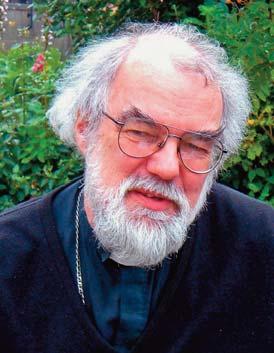
John had a large circle of friends, though his outwardly extrovert and enthusiastic nature and personality disguised
The Archbishop of Canterbury, Dr Rowan Williams, in October awarded the Lambeth DMus to Dr Francis Jackson CBE and Dr Martin Neary LVO (pictured below), in recognition of their outstanding contribution at national and international level to the development and appreciation of sacred and secular music, and to their work as organists and conductors.
Lambeth degrees are awarded on merit, in recognition of particular contributions to religious, academic and public life.
Francis Jackson was organist at York Minster for 36 years, while Martin Neary served as Director of Music at Winchester Cathedral and Westminster Abbey.


The service was enhanced by the presence of the choir of All Saints’ Church, Fulham, conducted by Jonathan Wikeley. The organist was Martyn Noble.
the fact that at heart he was a very shy and reserved person who never volunteered much about himself except to those he knew best. To the choristers he was a towering figure – loved, respected and, in equal measure, feared by all. He was also a very kind person, always concerned to help further the careers and interests of able pupils and colleagues. His advice was widely sought and valued by many organisations, not least the Royal College of Organists, which at various times he served as President and as Treasurer.
For half a century John Birch has been a significant presence and influence in the world of organ and church music in this country, behind the scenes as well as in the public eye. His face, for those who have binoculars and know where to look, may be found carved in stone, among those likenesses placed on the parapet of the cathedral bell tower at Chichester, when it was restored.
Worcester International Festival for Young Singers 19-27 July 2013 http://singuk.org/wifys
In July 2013 Sing UK, the national singing organisation, will present the first-ever international festival for children’s and youth choirs in the UK – the Worcester International Festival for Young Singers 2013 (WIFYS, pronounced ‘Why-Fiss’). It is hoped that this will attract 400 young singers from some of the most outstanding youth choirs in the UK, Europe and beyond.
WIFYS will establish the UK on the international map of similar events held elsewhere in the world. Artistic Director Malcolm Goldring says, “I’ve been conducting at events like this in other parts of Europe for years and I’ve been asked repeatedly: ‘Why don’t you have something like this in the UK?’. When I was last working in Germany I resolved to do something about it instead of simply shrugging my shoulders. Now we can look forward to adding to this country’s international choral singing credentials with an arena for young people to collaborate in a noncompetitive environment.’
The young singers will share their national musical traditions and cultures in a week-long event featuring a range of public concerts, street singing and workshops culminating in a Gala Concert in Worcester Cathedral. One of the conductors, Bob Chilcott, has been commissioned by Sing UK to produce a new work for WIFYS that will feature all the singers. Five Days that Changed the World, using poems by Charles Bennett, will be performed at the Festival’s Gala Concert on Friday 26th July.
The cathedral world was taken by surprise when, in 1980, at the age of just 51, John decided to take early retirement and move back to London. However, this was to prove a particularly busy time for him.

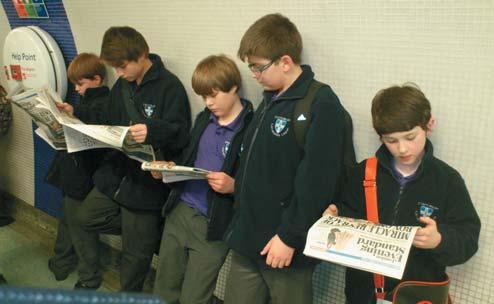

Shortly before the closure, the choristers of Canterbury Cathedral had produced a new recording of the Britten Ceremony of Carols, with the customary fanfare of a launch. At a conversation between the theatre director, Mark Everett, and the renowned choreographer Richard Alston, the topic turned to the theme of A Ceremony of Carols. This conversation, together with Richard’s fondness for the works of Britten and this piece in particular, brought forward the idea of a new ballet, created specifically for the new Marlowe Theatre in collaboration with the Canterbury choristers. It was an idea which all parties found fascinating. Dates in diaries, well into the future, were marked out for performances. That’s a long time ahead, we all thought.
As the new theatre rose up in the centre of the city and attention to the first season of performances grew, so did the realisation that this collaboration would be something entirely new, not just as a choreographic creation but also as an opportunity few teams of choristers could ever experience. The première was chosen to be at the beginning of a national tour by the Richard Alston Ballet Company, in the Marlowe Theatre, with performances a little later in the tour at the Sadler’s Wells Theatre in London. The choristers would not be able to take part in any more of the tour, for obvious reasons.
It is not often that we sing long works from memory but it was essential to be on stage without reading from any music. The task of learning the work became quite an eye-opening process for the choristers, as they were able to put so
much more into the performance than if they were relying on reading the piece. They learned how it is that so many solo musicians and opera singers perform from memory. They also found how relatively easy it was to memorise Britten’s beautifully constructed score.
Rehearsing with the dancers for the first time gave us a wonderful experience of collaboration and also that vital feeling of mutual trust, so important if tempi, continuity and concentration are to be shared. Eyes turned, of course, to watch the truly astonishing skill of the dancers, but had to be quickly turned back to the task in hand so that our half of this partnership could be properly executed. The boys were amazed at what these athletic dancers could do: their strength and agility was a complete surprise, but so was the very enthusiastic response of the dancers to the singers once the rehearsal was over: never before had they danced to live choral music.
Richard Alston’s vision of the work had been based not only on a long-time fondness for the music, but also a knowledge of the situation in which Britten had conceived the work (crossing the Atlantic, returning from America during wartime). Richard’s choreography was, of course, stunning and highly original, but many members of the audience found their attention drawn towards the nineteen boys in purple cassocks at the back of the stage who gave such a committed performance. Particularly difficult to achieve was the closing procession, in which Richard asked the choristers to walk downstage between the dancers and then divide and file into the wings, moving at the right speed towards the footlights. Staying in time whilst continuing the magical close of the ballet was quite a task, but they managed it beautifully every time.
The Guardian’s dance critic, Judith Mackrell, wrote:
‘During the first minutes of Alston’s latest work it takes a serious effort of will to focus on the dance. At the back of the stage are 19 boys from Canterbury Cathedral choir, who sing the music for

Britten’s setting of A Ceremony of Carols Mere children, they hold the theatre captive – not only with the purity of their voices, but with their heart-wrenchingly adult ability to hold Benjamin Britten’s complex harmonies in tension.
‘But if the music sometimes seems to be a world within itself, Alston knows what he’s doing. Having expanded his company to 16 dancers here, he finds within the score a deep choreographic structure. Ceremony is less about the large, swinging, angled shapes of its steps than about the formal relation of dance to music. In great folding waves of repeating movement and in lines of close contrapuntal opposition, Alston captures the soaring ecstasies and dark mysteries of Britten’s musical vision.’
Three performances in Canterbury and later two in Sadler’s Wells turned the choristers into familiar back-stage and on-stage experts, but then of course they are very much at home with the idea of producing a performance for the moment in front of an unknown (but here unseen) audience. The rapport and mutual respect which was built between these young singers and those amazing dancers and the members of the company were both very tangible and amply expressed. The thrill of the occasion, because it was so different from what we normally do, was truly amazing. We are looking forward to the next time when we can dance and sing.
David Flood is Organist and Master of the Choristers at Canterbury Cathedral, a post he has held since 1988. He was previously Organist of Lincoln Minster and Assistant Organist at Canterbury. The choir under his direction has made 15 recordings and toured extensively in Europe and N. America. Most importantly, the cathedral choir sings seven days a week in term time to a very large eclectic congregation from all corners of the world: a responsibility they not only cherish but enjoy. David is leading the programme to rebuild and enhance the cathedral organs in the near future. He is a Visiting Professor and Honorary Fellow at Canterbury Christ Church University, and a Visiting Fellow of St John’s College, Durham. He was awarded the honorary degree of Doctor of Music from the University of Kent in 2002.
In order to make way for a wonderful new theatre (which was opened in autumn 2011), the Marlowe Theatre in Canterbury closed in 2009. The two years of closure gave ample time and space for all sorts of new programme ideas and also for new collaborations, premières and performances, of course.

Age: 32
Education details (school/university):

Gloucester state schools, King’s School, Gloucester, Bristol University
Career details to date (and dates):
2002-2006 Assistant Director of Music, St Mary’s, Warwick
2006-2008 Organist, Clifton College
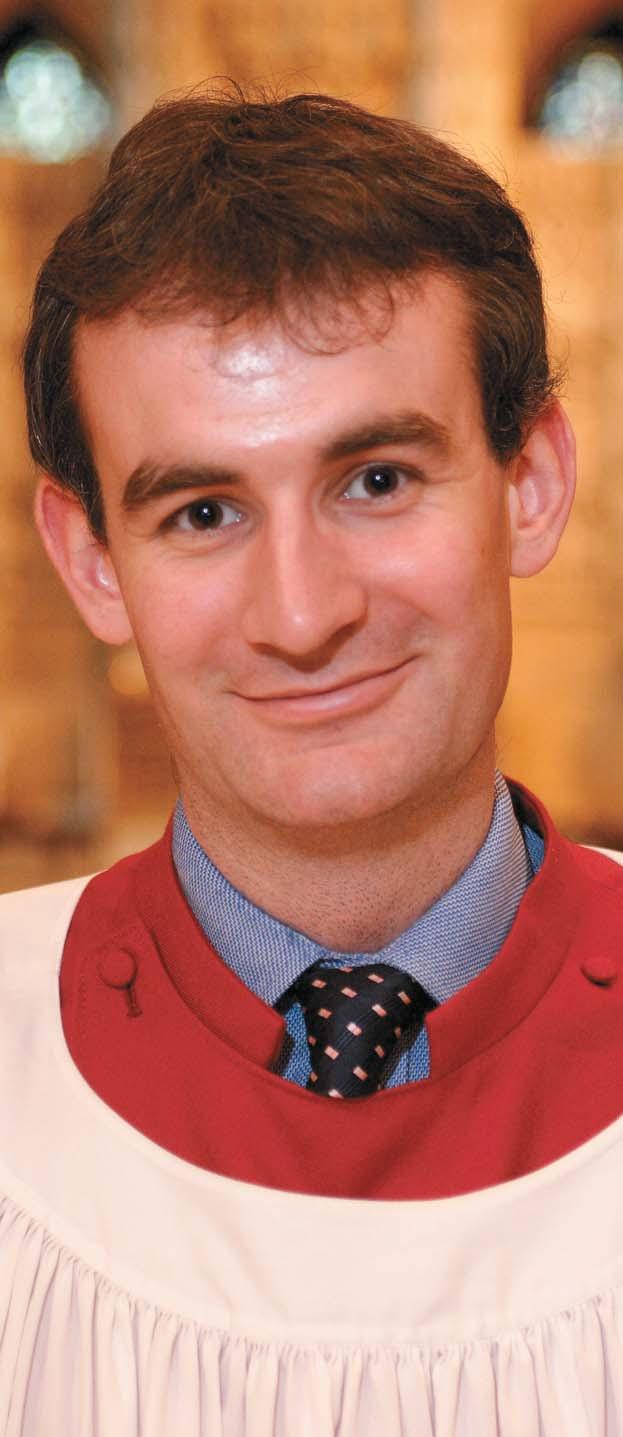
2008-date Assistant Director of Music, Truro Cathedral

Were you a chorister, and if so, where? Did you enjoy the experience?
Yes, but not in a cathedral choir – at Holy Trinity Church, Longlevens. I much enjoyed it, and it was a very formative time.
What did you enjoy most about being an organ scholar at Gloucester?
The chance to get hold of a four-decker! It was my introduction to a world that seemed utterly unreachable only a few years before I started. I met lots of wonderful people with similar interests, only much more talent; I got to witness at first hand remarkable acts of genius by David Briggs (for whom I played a few notes in his famous Mahler 5 disc, in addition to setting off an electronic metronome in the first complete take of the symphony, which is luckily inaudible, just about); playing in that heavenly acoustic and knowing that one was adding to a spectacularly distinguished sonic history; Howells and Gurney had been articled pupils at Gloucester, so in a kind of sense were almost predecessors – that was very weird. I could go on…
What or who made you take up the organ?
I simply loved the sound of it. From a tiny age I was intrigued by the chorus of sound right from the depths to the highest squeaks – I didn’t realise that at the time, of course.
When you were at school, did you think you might end up where you are now?
I never thought I would be in the wonderful position I am now. I’m still surprised most days.
Are you still involved with the Eton Choral Courses? If so, what does this involve for you?
I haven’t played on one for a couple of years – my last was in 2010. The course organist role is a huge privilege, working with probably the keenest and finest young singers in the country with some of the most dedicated singing teachers and choral directors in the world.
What organ pieces have you been inspired to take up recently and why?
I had a silly idea of learning Vierne’s Symphony No. VI, which I inflicted on an audience in Truro Cathedral in the summer. I wanted a substantial piece to play that would sit well in the second half of a concert, the theme of which was links between Cavaillé-Coll and Father Henry Willis (a drop of French wine and the reincarnation of Henry Willis helped to keep everybody awake until the end).

Have you been listening to recordings of it, and if so is it just one interpretation or many and which players?
I have listened to various recordings of this piece. I’m always in awe of Jeremy Filsell’s performances, not just for their exasperating technical virtuosity but also the power of his interpretations.
Which organists do you admire the most?
Well, my attentions tend to get shared out depending on my mood, the moon, etc. I’ve recently become bowled over by some great harmonium playing (I’m currently in a bit of a Mustel Harmonium craze); Artis Wodehouse is my current idol. (You can see and listen to Artis Wodehouse on YouTube – Ed.)
What was the last CD you bought?
Canteloube Songs of the Auvergne, Naxos discs – superb!
What was the last recording you were working on?
A solo organ disc from Truro with Regent Records, currently being edited.
When is your next organ recital? Which pieces are you including? St Albans Abbey, a lunchtime concert, with a varied programme including works by Bach, Vierne, Bednall, and Parry.

Have you played for an event or recital that stands out as a great moment?
I recently played continuo in a performance of Bach’s B Minor Mass, sung by our cathedral choir as the Sunday Eucharist mass setting! I don’t think that happens very often.
Has any particular recording inspired you?
Non-organ would be some Motown Classics LPs I managed to access and play when I was about 4. The first organ recording was Alan Wicks’s Canterbury recording of the Allegro from Widor Symphony No. VI – I was about 11.
How do you cope with nerves?
Well, at the end of the day you just have to jump, and trust the parachute. But failing to prepare is preparing to fail, as somebody once said – and I think they are right.
What are your hobbies?
I like cooking, pootling about in my mighty Yaris, and I fully intend to become healthy very soon.
Do you play any other instruments?
No (clearly that’s not entirely true, but true enough for this vaguely professional purpose).
Would you recommend life as an organist? Depends who was asking.
What are the drawbacks?
To be even slightly successful you have to work very hard indeed, which is probably true of all musicians’ jobs, I guess.
What do you think should be the role of the FCM in the twenty-first century?
Helping to polish up this globally unique treasure and put it on the podium that it absolutely deserves to take in the nation’s and the world’s cultural consciences.


One occasion when these questions came under considerable scrutiny was the funeral of Diana, Princess of Wales, in September 1997. Among the comments I received after the service was a fax from John Bertalot, formerly Organist of Blackburn Cathedral – and I hope I won’t sound too immodest by quoting from it:
You realise of course, that by your gracious acceptance of a full variety of music at that service, none of us can ever say again, ‘We don’t do that sort of music here!’
As Earl Spencer changed the course of the monarchy, so you, by embracing such a wide spectrum of musical offerings, have for ever changed the nature of music which could be offered in places of worship from this time forth.
At the time I certainly didn’t realise what the long-term impact of the service might be, but now, over fourteen years later (and with an experience of sixty years in church music), I can look back with a degree of perspective. It would have been inconceivable in the late 1940s and early 1950s, when I was a chorister at the Chapel Royal, for a service in one of the bastions of the Anglican church to have been so personal and so musically eclectic. When I saw on TV the Prime Minister’s tribute to the ‘People’s Princess’, I became convinced that the service, and the music, ought somehow to reflect his words. I realised that our regular repertoire might be inadequate, and so, when I received a phone call from Elton John, I tried to have an open mind.
I knew nothing of Candle in the Wind, but I did make the point to Elton that either he would have to compose a new song, or else provide alternative words (because the original words were written in tribute to Marilyn Monroe). Spurred on by this challenge, Elton immediately contacted his lyricist, Bernie Taupin, in California, and six hours later Bernie faxed over Goodbye, England’s Rose.
In the event, Goodbye, England’s Rose became the most talked about and controversial musical item, but I don’t think it took anything away from the dignity of the occasion. The service after all began with William Croft’s Burial Sentences, which are very much a part of our cathedral tradition (specifically, Thou knowest, Lord, which had been composed by Henry Purcell for the funeral of Queen Mary in 1695).
The other piece of music which for some people made at least as big an impression as Elton John’s Goodbye, England’s Rose, and was also outside the normal cathedral tradition, was John Tavener’s Song for Athene. This had been composed in memory of a young Greek actress who had been killed in a cycling accident. In choosing Song for Athene, we were not so much breaking with tradition, but rather expanding it. It was almost certainly the first time that words from the Orthodox funeral service had been sung at a funeral in Westminster Abbey, but Tavener’s setting, incorporating the Orthodox chant ‘drone’, and with his radiant ‘alleluias’, took us beyond the limitations of strict Anglican worship. The combination of Sir John’s inspiring music and the Orthodox text, with its unwavering belief in the triumph of the Resurrection, seemed to touch the hearts of millions who would not ordinarily have found themselves able to respond to a ‘regular’ Anglican service.
Here, then, are three examples of music in and outside our tradition. Those of us who have had the privilege of a lifetime of making music in church know very well the riches we have inherited, but what should be our role in ensuring that the tradition stays alive?
My answer to that is unequivocal: trying out new repertoire written by our contemporaries, and asking our listeners to be willing to come and hear it.
A recently published biography of the Strasbourg-born conductor, Charles Munch, who from 1949 to 1965 was Music Director of the Boston Symphony Orchestra, included the following quotation from Munch’s autobiography:
There is only one proper attitude to take toward the music of our own time: be patient, open our hearts, listen without prejudice or snobbery…
Can such – should such – laudable precepts apply to church music?
For a variety of reasons, probably more theological than religious, church music, in particular Protestant church music in the nineteenth century, drifted further and further away from the sharp edge of contemporary, and from works composed in a secular style; indeed, even when I arrived at Westminster Abbey in 1988, I encountered in some quarters opposition to the idea of our singing a Mozart Mass, on Easter Day, as it was ‘outside the idiom’ and barely different in style from his operas.
Nearly twenty years earlier, when I was appointed Organist at Winchester Cathedral, I found myself faced with a similar problem when choosing the programme for the 1972 Southern Cathedrals Festival. There had been a tradition of performing new works at the Festival, such as Bernstein’s Chichester Psalms, and I wanted to continue the custom. As a result, the Festival commissioned a mass from John Tavener (A Little Requiem for Father Malachy Lynch).
John at that time, before his conversion to the Orthodox Church, had been much influenced by his love of the music of Stravinsky and Messiaen, and his style was pretty wild. The new work, however, was quite austere, yet still demanding on the singers, and also, I may say, on the then young and inexperienced conductor; it took some time for the three cathedral choirs to absorb the new idiom. A Little Requiem mercifully was considerably less challenging than the Chichester Psalms, which required the choirs to sing in Modern Hebrew!
The following year, Winchester-based forces gave a performance of another work by John Tavener, the Celtic Requiem, and then in 1974 I decided to branch out further – I

How can we both respect our musical inheritance and also ensure that the tradition we value so highly is kept alive? Can these two aspirations work harmoniously?
John Bertalot
persuaded the Dean and Chapter to commission a setting from Jonathan Harvey. Jonathan, a lecturer at Southampton University, was already one of the most avant-garde composers of the time, and a burgeoning expert in electronic music, but he had been a chorister at St Michael’s College, Tenbury, and I felt it was worth taking the risk. The short anthem (The Dove descending) used the cathedral’s acoustics most imaginatively, without forsaking his natural idiom – lots of tri-tones, and wide leaps. And in a kind note after the service the Dean wrote that he thought it had been ‘right to commission the new work, even though it would not have pleased everyone, such as the Duke of Wellington, for example’.
Thus encouraged, for the 1978 Southern Cathedrals Festival I decided to commission from Jonathan Harvey a new Magnificat and Nunc Dimittis, with ‘no holds barred’! Jonathan took up the challenge with some relish, but when my distinguished colleagues John Birch (at Chichester) and Richard Seal (at Salisbury) first saw the score, it would be breaking no confidences to say that they were somewhat shocked. Nevertheless, we duly gave the premiere at the combined Evensong in Winchester Cathedral.
Now, although there were plaudits in the press, I do not for one moment think that these reflected the response of most of the congregation – indeed, at least one person walked out in protest.
Alongside this fascination with contemporary music, I also got hooked on the idea of ‘period performance’; and this brings me to another aspect of respecting tradition, and bringing to life the music of the past. In the late 1960s and early 1970s the number of good instrumentalists who played on instruments similar in pitch and structure to those built in the 18th century and earlier was comparatively few. I had had the chance, though, to experience the difference this could make to performances of Baroque choral music when playing the organ for Louis Halsey and his singers. Suddenly the choir was no longer being drowned by the orchestra, and the short and lighter phrasing of the instrumentalists became quickly taken up by the choir.
There was another important difference. The instruments were generally tuned a semitone lower, which certainly helped the sopranos and tenors on the higher notes, although the altos were not so pleased when the range went uncomfortably low. Another complication for keyboard players was that, until the appearance of chamber organs either tuned a semitone lower or with the facility of moving the keyboard down a halfstep, organists were often faced with some quite awkward transpositions (in Messiah, for example, And with his stripes had to be transposed from F minor to what became F flat minor!).
Earlier I referred to Purcell’s Thou knowest, Lord, which at Princess Diana’s funeral was sung with the harmonies as Purcell had left them in 1695. However, within forty years of Purcell’s death, when Handel bestrode the London musical scene, Purcell’s star had fallen and much of his work either went unheard or was altered. Indeed, by the time wellmeaning editors and publishers decided to bring Purcell’s music back into circulation, musical fashions and tastes had changed so that in several instances Purcell’s harmonies were adjusted – to make them more in keeping with contemporary ideas of harmony. When in the 1960s I first saw a copy of his Latin anthem setting of words based on Psalm 3, Jehovah, quam multi sunt hostes, the dissonant harmonies had been ‘sanitised’ – not unlike Victorians covering up piano legs, or in great works of art what were considered to be inappropriately exposed parts of the body!
Another example is Purcell’s Te Deum, in which William Boyce allocated the alto solo to a tenor, transposing it down to place it within a more comfortable range for the tenor. He also could not resist inserting extra instrumental movements (to make the style closer to Handel’s), and completely altering the glorious alto solo Vouchsafe, O Lord. Now, I see nothing wrong in adjusting a piece of music to suit the needs of the local forces – both Handel and Bach frequently did just that – but Boyce went far beyond that in inserting his extra movements.
A few months ago an article in the Church Times noted the encouraging fact that Anglican choral worship is currently proving surprisingly popular in Cambridge. I wonder what precisely it is that appeals most? Is it too far-fetched to think that it might be the ritual chanting of the psalms? Good singing to Anglican chant has a striking effect. As a Westminster Abbey chorister parent wrote after hearing one of our recordings: ‘I find it extraordinary that the fixed framework of Anglican chant – 14 bars of minims and semibreves – has enabled composers often unknown outside the realm of church music to create perfect music miniatures.’
So how can we maintain that tradition? I believe that allowing a good choir to sing the psalms on its own is more rewarding than congregational participation because too much is lost if the meanings and subtleties of both the text and the chants being used are effectively disregarded. Robert Bridges, when Poet Laureate, felt so strongly about the primacy of the words that he intervened to help banish the old cathedral psalter, which so often turned the end of each line of a psalm into metrical gibberish.
Being true to tradition should not be mistaken for slavish acceptance of what has come down to us over many generations, but rather a desire and responsibility for each generation to get to the heart of the matter, a principal as equally applicable to words as to music. We should:
• continue to enrich tradition, by ensuring that the best music of the past is not neglected, and by being as true as possible to the composer’s intentions;
• continue to be bold in performing new works; be openminded about them, trying to forsake personal preferences and prejudices;
• in the words of Psalm 96, ‘tell it out among the heathen’ about the richness of the whole liturgical experience waiting to be discovered, so that those you encourage, exhort, or browbeat into coming to Evensong will agree with the psalmist and indeed ‘the congregation here present’, that they were glad they had ‘entered into the House of the Lord’.
A longer version of this talk, which was originally given to the Friends of Newport Cathedral Choir in January 2012, can be read on the cathedral choir’s website, (www.newportcathedralchoir.org)
...within forty years of Purcell’s death, when Handel bestrode the London musical scene, Purcell’s star had fallen and much of his work either went unheard or was altered.












“ I expect it is not often in a career that the opportunity arises to design an organ for a brand new 750-seat concert hall, but in late 2009 that was the challenge I was given when we began the construction of a new Performing Arts Centre at Yarm School. After investigating a number of possible suppliers, it was decided that the contract should be awarded to Viscount Classical Organs as their revolutionary new physical modelling technology offers an excellent combination of quality, and improvements that will become available.
Each time I play or listen to the instrument, it exceeds my expectations and the elegant and contemporary terraced console organ repertoire on authentic sound palates, and the instrument easily supports school assemblies when the auditorium is full.










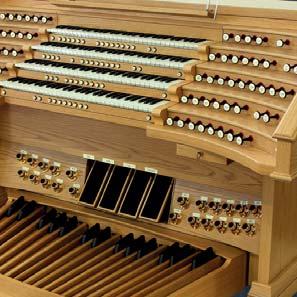


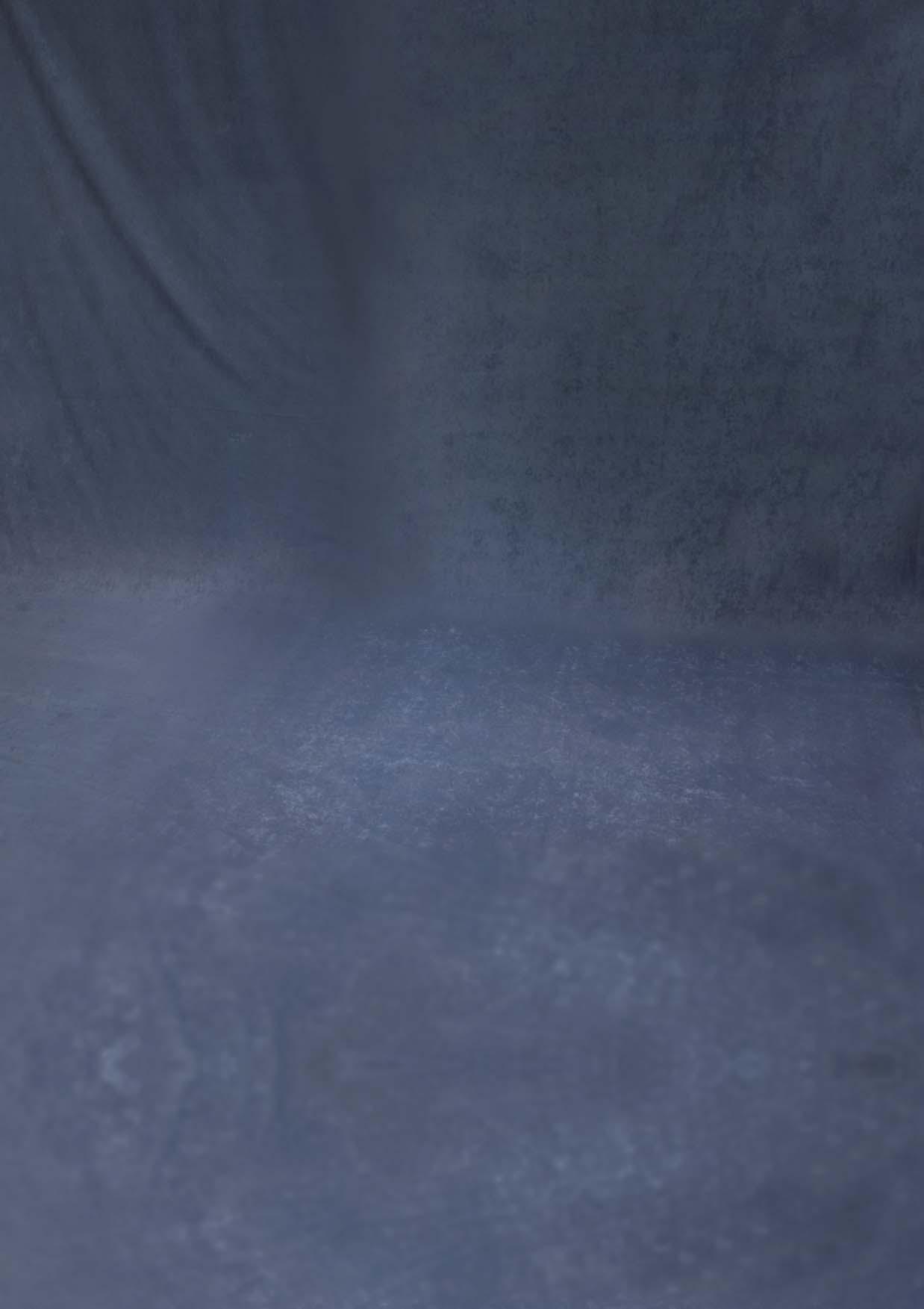
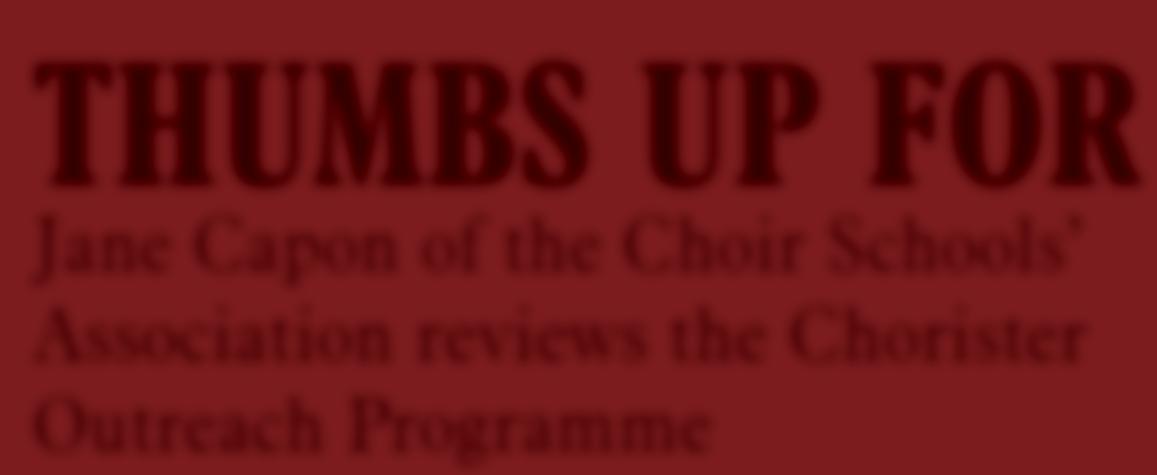


bringing a rich variety of choral music to millions.


In the late 1990s the word ‘outreach’ crept into our vocabulary. St Edmund’s School in Canterbury started a Saturday morning school for local children. It was a big success; the Junior School not only educates the choristers for Canterbury Cathedral but is now home to the East Kent Children’s Orchestra, which incorporates instrumentalists from outside as well as within the school to form a 50-strong symphony orchestra. This regularly works with specialists from the English Chamber Orchestra and tackles an eclectic mix of both classical and popular repertoire. Many of the 25 Canterbury choristers are members, in addition to their singing commitments.
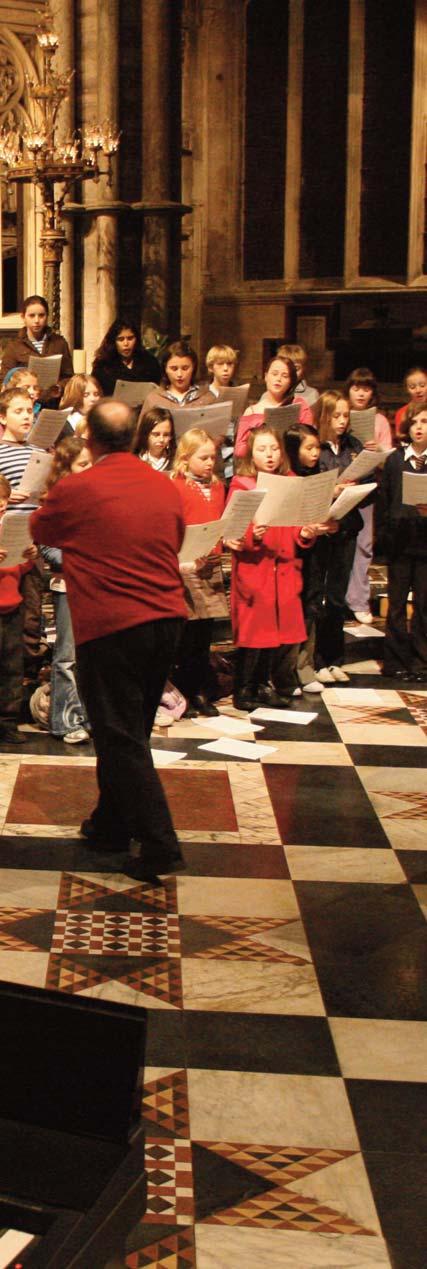
St John’s College School in Cambridge launched its Stringmoves project for 5-6 year olds in 2003, using Dalcroze Eurhythmics, a fun and exploratory way for children to learn musicianship and to discover the expressive power of music before starting to learn a stringed instrument. Once individual lessons have begun, every child (up to twelve in a group) learns music theory, takes part in a short choir session, and joins in group music-making. Pupils are able to remain with the project until at least the end of their primary schooling. Of course, St John’s and St Edmund’s are not alone – three specialist music schools under the CSA umbrella (Chetham’s School in Manchester, Wells Cathedral School and St Mary’s School,

“I love it when the cathedral is full of children’s voices. There’s nothing quite like the sound – it gives life to the building. Today was a really uplifting and beautiful day for me.”(A primary school parent after a termly concert at the cathedral, part of the Chorister Outreach Programme). Lichfield Young Voices
Edinburgh) have had wide-ranging outreach programmes for many years.
By 2000 Richard White, then Headmaster of Polwhele House School, choir school for Truro Cathedral and Chairman of the Choir Schools’ Association (CSA), was convinced that choir schools could help reverse the decline of singing in primary schools. Using choristers as role models in primary schools was a new concept when the cathedral and Cornwall’s Music Service launched the first outreach programme in September that year.
Canon Wealands Bell, Precentor of Lichfield Cathedral, comments: “Cathedrals have come to the idea of outreach rather late in life: we have always just expected people to turn up on our doorstep as pilgrims or visitors, so the process of going out to schools to share with them in the wonderful gift of music has been an exciting revelation to us, and its effects run deeper than we might have expected.”
Cathedral musicians, choir school headteachers and local authority music advisers met at St Paul’s Cathedral in February 2002 to explore ways of promoting quality singing in primary schools. Within five years Lichfield, Liverpool Metropolitan, Hereford, King’s College Cambridge, Bristol, Durham, Gloucester, Salisbury and Ely cathedrals and Ampleforth College were running projects with modest financial help from the government’s Music and Dance Scheme (MDS).
Choir schools’ outreach work did not go unnoticed and in January 2007 the then Secretary of State for Education announced details of a £4m fund over four years. In 2008 the Chorister Outreach Programme formally became part of Sing Up, the national singing programme with former New College chorister Howard Goodall as the government’s Singing Ambassador.
By then forty-two cathedral and choir school foundations were part of the COP and Goodall wrote of the choristers: ‘With such keen and talented young advocates working closely with their choirmasters and local expert singing leaders, we know that children, teachers and parents in primary schools across the country have realised what a gift singing can be. Not only to their musical lives, but to their learning and to local community cohesion.’
A total of forty-five English cathedral and choir school foundations ran COP projects between 2007-2010.
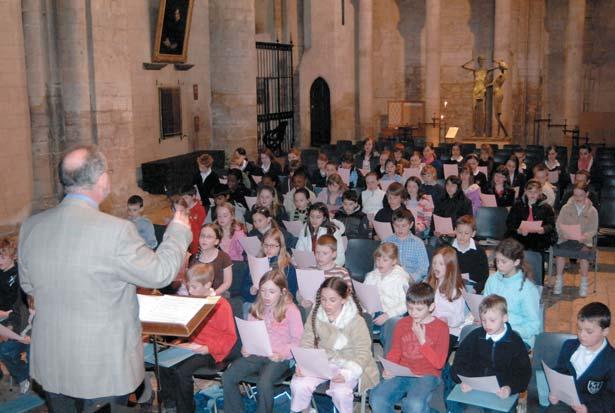
An important ingredient of these early outreach projects, while not mandatory, was the setting up of a junior choir to meet outside the classroom and provide opportunities for children to develop their skills further. For quite a few it has been a stepping stone to becoming choristers. Durham Cathedral Young Singers (DCYS) has been running for several
years and has about forty members. Many of the older singers move on to other choirs including ones run by The Sage Gateshead and the National Youth Choir. More than a dozen children have become choristers.
A recent Evensong in Durham Cathedral had 22 parents sing in SATB with their children, supported by the chapel choir of St Chad’s College. They sang Stanford in B flat, and Ave Maris Stella by Layos Bardo, with plainsong responses. It proved a winner: both parents and children were eager to do it again.

Durham has also tackled the thorny issue of where these children go once they have left the junior choir. The Outreach Director, Mish Kelly, has just started a teenagers’ choir, called Vox, which is helping to keep boys interested in singing. As she says: “With such small numbers I can give them individual encouragement. They have to be able to read music to join. Those not quite up to standard can come along to prerehearsal theory and sight-singing lessons.”
Paul Trepte, Director of Music at Ely Cathedral, founded the Ely Imps in 2006. That year, over 100 boys and girls aged 8-13 sang to a packed cathedral under the baton of John Rutter. Since then they have sung alongside high-profile musicians such as Aled Jones. They regularly sing with the cathedral choristers, which has encouraged some to become choristers themselves.
Paul says: “Our 45-minute rehearsals are deliberately planned to take place on varied weekday evenings so that children with other commitments can attend regularly without sacrificing their other interests.
“Singing is enjoying quite a resurgence these days – in part thanks to television programmes which have demonstrated that a ‘feelgood’ factor is among its many benefits. Singing in the fabulous setting of Ely Cathedral under the guidance of professional experts such as our superb singing amateur, Rebecca Duckworth, is an especially rewarding experience.”
Since 2008 Edward Taylor, Carlisle Cathedral’s Assistant Organist, and Jonathan Millican, a bass lay clerk, have visited 25 primary schools in Carlisle and North Cumbria, working with some 1200 Key Stage 2 children.
Administrator Ellis Amos says: “The Chorister Outreach Programme was so successful and appreciated by schools and children that when government funding ended in July 2010 the cathedral chapter was determined to continue with it. The chapter makes a £9000 contribution to the annual cost of £24,000, which is also helped out by local trusts, organisations and individuals, fees from the participating schools,
subscriptions from the Carlisle Cantate choir members and donations from the audiences attending Outreach concerts.”
Singing Out, the Carlisle Cathedral Outreach Programme, was launched in May 2011 and this year Edward and Jonathan are visiting seven primary schools to deliver nine weekly onehour lessons. In addition, the children visit the cathedral for workshops with the choristers, a guided tour of the building and a joint singing session to prepare for the end-of-term concert when they will perform to a full house of family and friends. The scheme is so popular that schools are already signalling their interest for next year.
A further aspect of the cathedral’s outreach is Carlisle Cantate – a 40-strong community children’s choir for 7-13 year olds established in January 2009. Last year it performed on several occasions and teamed up with the Abbey Singers and the cathedral youth choir for a concert at the Carlisle Festival.
Jonathan Millican comments: “The high level of commitment and enjoyment from the children is infectious and the sense of achievement and pride after each concert never goes away.
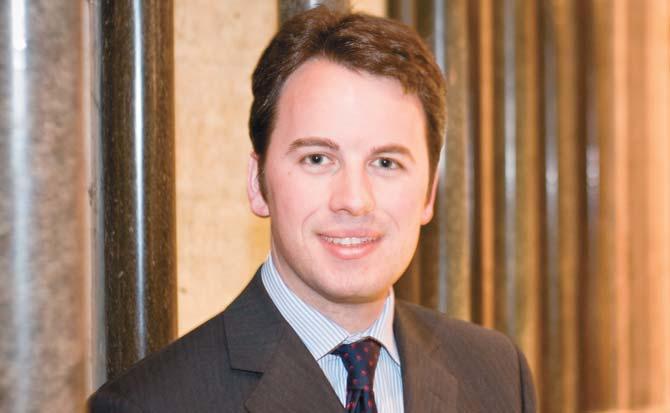
“It is my belief that all children deserve this wonderful opportunity to discover singing and performance, especially as the link between music – singing especially – and productive learning is evident from educational studies.
“The confidence singing inspires and the benefits it brings to classrooms are invaluable to children’s learning. Just look at the Horrible Histories songs that can be heard reverberating around playgrounds up and down the country.”
Alison Forster, Director of Music at The Minster School, has run and co-ordinated York’s outreach programme since it began six years ago. She has excellent support and help from David Pipe, Assistant Director of Music at York Minster. Since starting, she has worked with 36 local primary schools and around 4000 local children both in large city and small village schools. There is also a flourishing youth choir with 40 members and growing.
Each term’s concert contains a wide range of repertoire: part songs, songs in a variety of languages, and unaccompanied and accompanied works. Alison comments: “The children lap it up with great enthusiasm and love performing for their parents in the Minster. The programme’s effect clearly reaches widely as I’ve even heard a three-part African song being sung across the playground during a playtime football match! The staff frequently remark with amazement at the way in which their pupils learn and sing these songs.”
Lichfield’s MusicShare programme goes from strength to strength. Cathy Lamb, the cathedral’s joint Director of Music, is running four school-singing workshop days this year with the support of Staffordshire Performing Arts. She comments: “I thought we might get 90-100 children, but well over 1000 children have signed up at £2 a head and we have a waiting list. I would certainly recommend other cathedrals trying the schoolsinging days – they are relatively stress-free and great fun.”
Canon Bell adds: “As well as giving us the opportunity to work in further partnership with our own cathedral school, MusicShare gives us the termly pleasure of singing Evensong to a quire packed with primary school children, with the promise of a lovely concert afterwards. We also have our own Lichfield Cathedral Young Voices, a choir which is becoming adept at providing music for a variety of different liturgical occasions, not just at Christmas.
“The programme also gives us the opportunity to show off our building and our living liturgical and choral traditions to a whole new generation, as well as to their families and friends. It makes them see that the cathedral is actually theirs, theirs to feel at home in along with everyone else. And that’s probably the biggest thrill of all.”
Sing Up’s funding from government came to an end on 31 March this year. Since then, a membership package for schools has been launched, giving them access to the website for resources, a termly magazine and face-to-face support and training.
From April an individual membership package will be available to non-school users, such as cathedral musicians.
Many of the pupils who took part in the Chorister Outreach Programme commented on the singing ability of the choristers both when the latter visited their schools and later when performing in the joint concert in the cathedral. Some described the best part of the experience as being “when the choristers sang their songs”.
The choristers benefited from the COP in a number of ways: they looked forward to taking part in COP sessions, their selfconfidence as leaders grew, and they enjoyed meeting other children and passing on their skills.
The Institute of Education’s research showed that COP has had a very positive effect on primary schools – both staff and children. It concludes: “Even though the funding for the COP programme has ceased, its legacy is evident in schools. Children appear to be more positive about singing, and the school culture as a whole is more open to the use of singing activities throughout the curriculum to facilitate children’s learning, concentration and enjoyment of lessons.”


2012 is the centenary of Alfred Deller’s birth. Here, Alfred’s son Mark records the origins of Stour Music, and looks back over his 50-year association with the festival.
Stour Music was founded in 1962 by my father, the countertenor Alfred Deller, principally as a festival devoted to Early Music, but in the initial years it also included exhibitions of paintings, organised by the distinguished painter John Ward. It was John who introduced Alfred to the remarkable ‘pilgrim’ church at Boughton Aluph, which was to become the inspiration for the festival, and where it now takes place over the last two weekends of June each year.
Set in the heart of ‘the Garden of England’, the festival takes its name from the River Stour, which runs along the valley between Ashford and Canterbury. The early festivals were held in a number of venues along the Stour valley, including the parish churches of Ashford, Wye, Chilham and Boughton Aluph, Canterbury Cathedral and chapter house, and the impressive country house of Olantigh near Wye. Alfred was then at the height of his international career and was able to call upon numerous luminaries of the Early Music scene to come and perform at the festival, so that regular participants included such people as August Wensinger and the Schola Cantorum Basiliensis, Gustav Leonhardt, Frans Brueggen, Nikolaus Harnoncourt and the Concentus Musicus, Collegium Aureum from Cologne, David Munrow, and of course – as a sort of resident ensemble – Alfred’s own group The Deller Consort along with lutenist Desmond Dupré. Stour was amongst the first pioneers to promote performances of works like Purcell’s Fairy Queen, King Arthur, The Indian Queen, Bach’s Mass in B minor, and many of the Handel oratorios, using original instruments.
The first festival, held in the summer of 1963, lasted for only one day. Needless to say, it was all done on a shoestring, and I remember the ad hoc committee (meeting in my parents’ house after the festival to count the cost) discovering that the
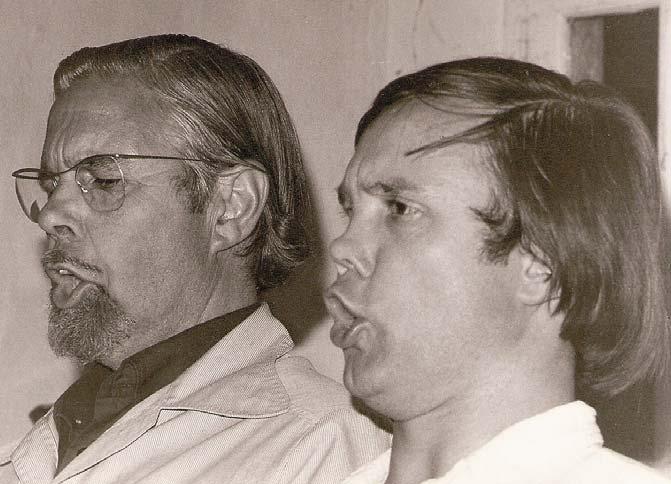
deficit was 8s 6d, whereupon my father put his old garden cap on the floor and we all threw in our loose change!
The success of that first festival was sufficiently encouraging for Alfred and the committee to embark on a three-day festival for 1964, and until 1974 (when I took over as director) the festival continued to promote its concerts in venues all along the Stour Valley. Those at Olantigh particularly somehow typified the whole ethos of the venture.
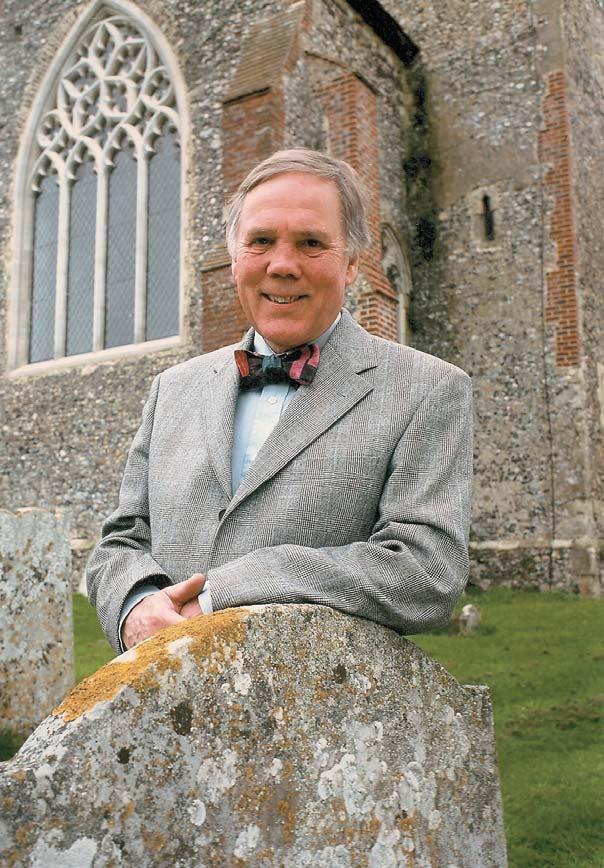
To hear the Concentus Musicus, for example, or for that matter The Deller Consort, in the intimate surroundings of Olantigh was something very special. But to make such an experience available to a relatively small number of people was not only economically precarious, but ran the risk of being considered elitist. Coincidentally, two events occurred which forced our hand. The owners of Olantigh, after thirteen years of having their house turned upside down and taken over by hordes of musicians, decided that enough was enough; and then just four years later, in 1979, Alfred died.
In an attempt not only to retain the loyal patrons of the Olantigh experience, but also to recreate something of the warmth of artist hospitality previously provided by my parents, I took the decision in 1979 to focus on Boughton Aluph church and at the same time provide hospitality facilities for both performers and audience. Marquees and portaloos were erected, and audience capacity for the concerts was increased to 450. This proved an instant success, and with the tremendous support of more than 70 volunteers each year, the festival has gone from strength to strength.
This year as we celebrated the 50th anniversary of Stour Music (and coincidentally the centenary of Alfred’s birth), I can recall some of the other individuals from years past who made such an impact on me and on the development of the festival – Julian Bream, Esther Lamandier, and Robert Spencer (another Deller Consort lutenist); and some momentous occasions – singing Britten’s Canticles with Peter Pears – Kent Opera’s premiere of The Burning Fiery Furnace –Lynne Dawson singing almost anything – and just a couple of years ago, Mark Padmore singing Dowland songs in a late night candlelit concert. Pure magic. The ‘old man’ would have been thrilled to bits; as indeed he would to see the festival still going strong in 2012, albeit requiring a slightly larger annual subsidy than 8s 6d!
Catherine Mackintosh
Being a typical musician, naturally the first thing that springs to mind about coming to Stour is the food – the best festival food on the planet, and a sure way to persuade all and sundry to make the yearly pilgrimage to Boughton Aluph church! Did the sun really always shine, or was it just the warmth in the marquee hung with posters of The Deller Consort’s travels round the world? I think my first visit to Boughton Aluph may have been in the late 1960s or early 1970s to listen to Alfred and Concentus Musicus, which never came to London in those days. To hear the great singer in the flesh was unforgettable. Suddenly, in a phrase of a Purcell song, a high note would float ethereally from his mouth, almost as if there was another instrument apart from his own vocal cords producing it. When he asked me to play in his recording of King Arthur, I leapt at the chance. As a devotee of Purcell’s music, the honour of working with Alfred was enormous. He was not very keen on rehearsing, which gave his concerts a unique air of spontaneity, coupled with his profound instinct for the music he performed.
As a man of Kent, Stour Music has always been a very special festival for me; the setting is unique, tucked away in the glorious countryside, the sheep bleating in the distance, a barrel of Shepherd Neame in the marquee. The church too is

an inspiring venue, its intimate ambience so suited to the music of the Renaissance, and it is always packed to the rafters with an audience who adore music and, even more importantly, love being sociable. After all, that is part and parcel of what makes a good festival. As for the hospitality, it is second to none – tea and cake, salads and puddings ever plentiful – and then, of course, there are Mark’s bow ties! Festivals are made special by individuals, and Mark has ensured that Stour will be always so. My most precious memory is not of the festival itself, but during the summer of 2010 when we made our charity walk from Guildford to Canterbury: we just had to make a small detour via Boughton Aluph. I will never forget the sun shining down on us in our shorts and T-shirts as we joined Mark in singing Purcell’s Thou knowest, Lord around Alfred’s grave – a moment to savour forever.
As with many experiences in my performing life, my introduction to Stour Music was rather full on. Not long out of ‘Swingles’ and not very experienced in the world of Early Music, I suddenly found myself masquerading as Sop 1 in the illustrious Deller Consort at the opening concert of a festival

which had up to then escaped my attention – and from that day on I was hooked! Being in the Consort is like being a member of the Deller family – and Stour introduces the extended family of willing and skilled helpers who, regardless of whether the scene is bathed in sunshine or drowning in mud, greet performers and audience alike with warmth and efficiency. The venue is magnificent, the hospitality is legendary, and above all the music-making is fun!
Stour Music for me is simply unmissable because of the very special spirit of friendship and camaraderie that the Deller family has always engendered. Mark is the best director any festival could have, combining charm and determination in a deceptively effortless way, and working tirelessly to ensure that everybody has a great time. Anybody who has been to Stour has the fondest memories of a very special experience,
and is only too eager to be invited for a return visit.
There is something very special about Stour. It’s not just the puddings in the artists’ tent, nor is it that it always seems to be sunny when The King’s Consort comes to Boughton Aluph. Nor is it the well-informed, enthusiastic and eager audience. Nor is it having such a lovely church at the end of a leafy lane, surrounded for a week by food-laden marquees – a scene which epitomises everything that is good about the best of British countryside music festivals. Nor the dozens of posters from past events displayed around the tents, reading as a veritable Who’s Who of period instrument music. Nor is it even Mark’s selection of bow ties, though these too are unrivalled in my sartorial experience. Without doubt, all these factors contribute to a truly unique event, but what Stour has is more intangible: it has spirit. There is an indelible magic in the air (or is it an inDeller-ible magic?). For, as everyone knows, Stour means Deller. May the Spirit of Stour continue for decades to come.
James Bowman reflects
Nearly all the singers who performed baroque music in the 1950s were afflicted by some degree of wobble. Not vibrato, that natural part of vocal technique, but a definite wobble, which to a greater or lesser extent affected both intonation and the flow of the melodic line. Alfred’s singing made everyone realise that there was indeed a different way to sing this repertoire, a style that was more accurate and true to the printed score; not a woolly approximation that only paid lip service to the music.
Nowadays, countertenors are so much a part of musical life that it is hard for us to imagine what it was like for Alfred then. He was not, of course, completely alone; there were other countertenors active in London, fine singers like John Whitworth, but it’s fair to say that Alfred was the first to capture the listening public’s imagination. And some were confused by him – they found it difficult to reconcile the imposing masculine figure with the delicate ‘other-worldly’ voice of such great beauty. That there was nothing remotely effeminate about Alfred’s sound only served to confuse people even more and life was not always easy for him. I only heard him ‘live’ once, but remain thrilled to have heard that unique sound in the flesh.
A longer version of this article appeared in the 2012 Stour Music Festival brochure. FCM is grateful to Mark Deller and the other contributors for allowing its reproduction here.
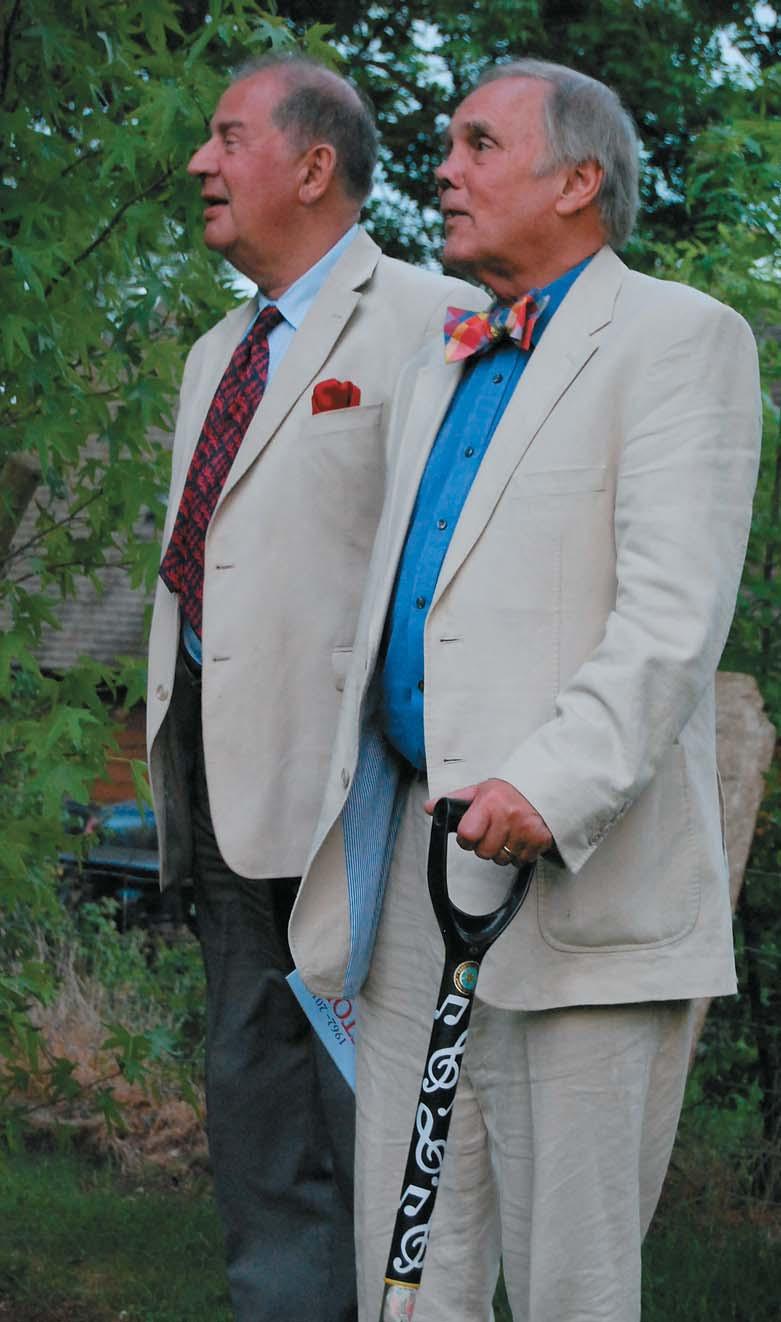
Never let it be said that Bob Chilcott shies away from the big project. I catch him in a rare free moment, a day or two after returning from Beijing – to speak about musical outreach projects and involving young singers in performing with professional choirs, and a week before a practical demonstration of just that: his latest Proms commission, The Angry Planet.

It’s not a small commission either, employing the largest forces in this year’s Proms season. A 45-minute, a cappella cantata for multiple choirs: the Proms performance sees the Bach Choir, the BBC Singers, the National Youth Choir and choirs from local schools all collaborating. The brainchild of Bach Choir director David Hill, it was designed to act as a launch pad for the foundation of the Bach Choir’s outreach programme.


“It’s actually quite a dark work,” says Chilcott, “the subject is the environment, and the piece follows the story of a forest from evening to morning: it takes the listener through a series of dreams or visions, and includes the tales of different animals, some extinct, some still with us. The crux of the piece happens in the middle of night, where I have set a list of species, all of which are now extinct. But there is hope in the
coming of morning – an otter, playing in the water with its young. It suggests that there is still a chink of light available to us; it asks: ‘Can we do something about this?’, and says, ‘Yes, perhaps we can.’”
Chilcott worked with the poet Charles Bennett on the project. “I’ve worked with him several times before,” he says. “We’ve written a lot of smaller, stand-alone pieces together. I very much enjoy working with him – we both like bouncing ideas off each other as the project grows. Things have changed as the piece developed – 45 minutes of a cappella singing is a long time, and it’s so important to make sure the shape and the pace of the piece are just right. Though it’s quite dense –there are times when all the choirs are singing together –there are plenty of lighter moments: the children’s choirs sing about weeds, for example. Weeds are annoying, but they are
persistent (they never go away) – so in a sense they are successful. We could be a bit more like them!

“I think it’s very important to be able to change direction as you work on a piece such as this. Charles and I have made a lot of changes: we occasionally need something to break the atmosphere or alter the pace. I had to find roles for the choirs, and these roles emerged as we went along. It’s been a hugely creative collaboration; Charles is incredibly inventive.”
The Angry Planet is just one of a series of large-scale pieces composed by Chilcott in recent years. Salisbury Cathedral commissioned the extraordinary Salisbury Vespers in 2009, and in 2010 Chilcott completed his Requiem, which was recently recorded by Hyperion (sung by Wells Cathedral Choir under Matthew Owens). It immediately became hugely successful, receiving performances from choirs across the globe.
Tackling a Requiem is not something for the faint-hearted –even choosing the texts is not the simplest of tasks. Chilcott’s Requiem includes what have become the ‘usual’ movements, but also includes the English text ‘Thou knowest, Lord, the secrets of our hearts’. He says: “I grew up singing the Duruflé Requiem one year and the Fauré the next. I found the interesting thing about the Fauré, in particular, is that the words that really define a vengeful God are sadly rather underplayed – the Dies irae lasts only about eight bars. I found that vengeful language hard to deal with, but in Thou knowest, Lord I found something that was the opposite: a text that essentially says: ‘I’m sorry, Lord, that I’ve been useless. Be decent to me!’ It’s incredibly English, and in many ways, extremely comforting. It also accentuates the human side of the Requiem, which is something I find terribly compelling. The words take into account the fact that you are in the world and all that that means – we all make mistakes, but here is a God who is willing to forgive.”
It’s this human side to religion, and a certain sense of Englishness, that pervades Chilcott’s next large-scale work: a setting of the St John Passion, which he is writing currently for Owens and Wells Cathedral Choir. The text is taken from the King James Bible: “Apart from anything else, it’s a fantastic story, beautifully told”. The shadows of previous compositions could loom dauntingly large here – Bach, of course, and also
the settings by Arvo Pärt and James MacMillan – but Chilcott has made a number of departures from previous works. “I decided to be brave and write the Evangelist’s part so that it can be sung by a man or a woman, accompanied by a solo viola and cello,” he says (the rest of the piece is scored for organ and brass quintet). “I’ve also spent quite a long time considering how to portray the drama of the story. In the end I decided to frame the piece with two reflections: the work opens with a setting of the Epistle of the Sunday before Easter, and ends with the Collect for the same day. I wanted it to be most definitely an English Passion; something that reflects the Anglican tradition.”
To this end, elements of that most English of pieces, Stainer’s Crucifixion, appear in the structure of the work. “In a strange way it became something of a model, structurally. It’s a work which is accessible to everyone, audience and singers, and that’s something that I very much wanted to be a part of the Passion. The challenge in setting this text is in how you build the drama; my plan is to include congregational hymns, set to new tunes, in the course of the piece. It’s pretty daunting writing new tunes to these marvellous texts, but the words are so wonderful, and so much a part of my growing up that I felt I had to include them.” The hymns (Of the glorious body telling, Drop, drop, slow tears, There is a green hill far away and When I survey the wondrous cross) are not the only moments of reflection: “There will also be a meditation for Mary after the moment that Jesus dies, set to a medieval text,” he says. “I love drawing on these magical, contemplative, medieval poems –it’s another moment where I think the human aspect of the story really comes through – at this point Mary is very much a mother, grieving for her child.”
It has been an interesting journey for Chilcott from his first days as a chorister to what he describes as “coming full circle to where you realise you really want to be”. His first musical experience was as a choirboy at a church in Watford; “I had a very kind and inspirational choirmaster there called George Stone, and the assistant organist at the time was Andrew Davis, before he went up to King’s as organ scholar. There were 35 boys in the choir – most joined because you got a free trip to the circus every year. I used to get a shilling for
weddings but had to share it with my sister. How irksome is that?”
It was the vicar of the church who suggested that Chilcott went for a choristership at King’s. “A very enlightened thing to do. I auditioned for it and, remarkably, was successful.”
This put him under the charge of David Willcocks. “He was tough,” says Chilcott, “with incredibly high expectations, and he pushed us very hard, but we loved him. I was fortunate to be there in the 1960s, which was something of a golden age for recordings.” Probably the most well known of these is the recording of Fauré’s Requiem for which Chilcott sang the Pie Jesu. “We recorded it and also sang it on television. Hermann Prey sang the bass with a soprano soloist for the television recording. David didn’t like Prey’s tuning at all – he stood in front of him with his finger pointing up the whole time – and when it came to the recording he made sure we had a different soloist. There was also the thought that the Pie Jesu would be better sung by a boy, and so I was asked to sing it. We recorded it at Christmas and released it in about three months – it was incredibly quick. The choir went down to the Festival Hall to sing Holst’s Hymn of Jesus, and the producer at EMI presented my father and mother with the recording. My father died just a few weeks later, so the piece has an incredible resonance with me.”
Chilcott returned to King’s as an undergraduate and a choral scholar, and followed that with a spell in London working as a freelance singer. “I didn’t particularly want to be a singer, but I could sing, so I fell into it. I also worked as an arranger for Radio 2, orchestrating hits for singers, and arranging music for the BBC Radio Orchestra and Friday Night is Music Night.” At the same time he was asked to arrange two pieces for the King’s Singers’ Kids’ Stuff album: The Owl and the Pussycat and This Old Man, which led to a call one day from Simon Carrington asking if he was able to step in for an unwell Bill Ives. “So I turned up sounding like I’d chewed a bag of stinging nettles, and ended up singing with them for twelve years!
“Joining the King’s Singers really crystallised what I thought about music,” he says. “They really were – and still are – all about the music and how to communicate it, and they thought so carefully – individually and collectively – about how to achieve that. They were also very supportive of my arranging, and I started composing again. It was a worrying thing to be doing – I was in my late thirties and I was unsure of my compositional voice. But the King’s Singers sang a number of my pieces, I started to feel my compositional feet again, and slowly the commissions began to come in.”
Leaving the King’s Singers gave Chilcott the time to devote himself to composition. “I really felt like life had become threedimensional at last. I was 42 and when someone asked me what I did as a job and I was able to reply ‘I’m a composer’, I nearly broke down in tears. I think that perhaps I would have struggled if I had come to composition earlier – a lot of us have to go round in circles before you realise what really lights your fire.”
Of course, it’s all very well writing music, but finding a publisher can seem rather more of a challenge. It was John Rutter who helped Chilcott on his way to a publishing deal with Oxford University Press (OUP). “I had sent a few of my pieces to John and without my knowing it he forwarded them on to OUP. They rejected them, actually, but John suggested I ring up and meet the then editor, Paul Keene. I did this and over lunch he asked me if I had anything new I could send him the next week. I said yes, of course, and had to rush home to write a carol I’d said I’d already finished. That was
Midwinter, and it was the first piece they published.”
Now, Chilcott has more commissions coming his way than he can deal with – an enviable state of affairs to be in. But how healthy does he think the state of new music is in our cathedrals and churches? “It’s certainly better than it was,” he says. “When I was starting to write in the mid-nineties, you could write a Mag and a Nunc, and no one was particularly interested in it. Then there was the impact of John Rutter, which was absolutely huge. He was so incredibly successful –but it probably opened the doors – paved the way – for a lot of other composers like myself. Now, I think this country is very open to new music, particularly at Christmas, of course. There’s a lot of energy out there, both from composers and choral directors, and it is hugely encouraging.”
Jonathan Wikeley read music at Emmanuel College Cambridge. He had a year as a choral scholar at Truro Cathedral before studying under Reinhard Strohm at Exeter College Oxford, although he spent most of his time singing in, and directing, many choirs. It was during this period that he took up the organ and became director of music at St Peter’s Church, Wolvercote. In 2004, he became organ scholar of St Mary’s Church, Battersea under David Walburn before becoming director of music. He studied organ with Anne Marsden-Thomas and Gerard Brooks and took his ARCO in 2006, winning all the major prizes. Jonathan is the choral editor for Novello Publishing, and works as a freelance journalist. He writes for publications in Britain and the USA, and has spoken on Early Music for BBC Radio 3. As a critic he has reviewed concerts from the Faroe Islands to Malaysia by way of Tuscany and Oman. He conducts several ensembles in London, and founded the Rhinegold Singers, which won the inaugural Office Choir of the Year Award in 2010.
James O’Donnell Organist and Master of the Choristers
Jonathan Milton Headmaster
All boys receive a substantial Choral Scholarship
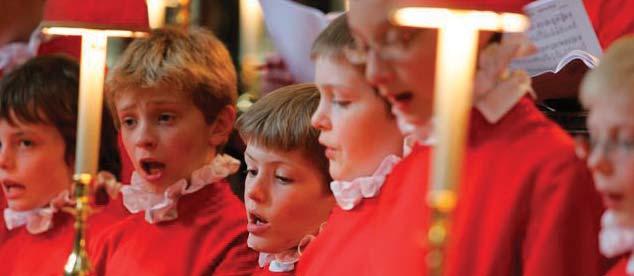
Why not come for an informal audition?
(Boys aged 7 or 8)
Details from:
Westminster Abbey Choir School
Dean’s Yard, London SW1P 3NY
Telephone: 020 7222 6151
Email: headmaster@westminster-abbey.org
www.westminster-abbey.org


There is nowhere better to escape to than Salisbury, if you want to get away from urban or metropolitan stress. Sadly, this inspiring festival only comes round every third year to the cathedral with the largest close and tallest spire in the UK. The tranquillity found within its walled and gated close is unique and now, thanks to the upgrading of Sarum College, one can lodge comfortably within its boundaries (but remember the last gate closes at 11pm!).
Several things were special in 2012: there was a new Bishop, the Rt Revd Nicholas Holtam, from St Martin-in-the-Fields, the Festival organ recital on the first evening was given by that doyenne of British organists, Dame Gillian Weir, making her last festival appearance, having announced her intention to
retire at the end of 2012, and Messiah was performed by nearly 100 men & boys and one woman.


The first concert on the Thursday afternoon was given by the boy choristers and lay clerks of the three cathedrals, with Simon Bell (organ), the three conductors sharing the direction. The combined choirs made a big sound in works by Naylor, Rutter, Mendelssohn, Elgar, Purcell, Sanders’ TheReproaches, Vaughan Williams and Gibbons, finishing with Attwood’s Come, Holy Ghost, Sumsion’s They that go down, and Stainer’s I saw the Lord. This was very well attended and got the Festival off to a good start. Chichester sang Evensong and in the evening Dame Gillian gave a well-chosen programme: Böhm Praeludium in D minor, a Bach chorale prelude and a Mendelssohn sonata movement, then the major work, Franck’s Grande Pièce Symphonique. This is a large-scale work that is episodic rather than symphonic, but nonetheless powerful and expressive; Dame Gillian made it all cohere and brought out the poetry and drama hidden in the long lines. It was a wonderfully understanding reading, which cast new light on the structure; what a shame it was not recorded (as far as I know). It was the first time I had ever seen an overhead shot of this famous organist’s hands playing and I found it very fascinating and revealing.
At 9.15pm we went back into the cathedral, now candlelit, for the first of two Late Night Bach concerts. These each featured two Partitas, impeccably played by David Halls and Alistair Watson on a Blüthner grand of great sonority. On the Friday, the pianists were Tim Hone and Ian Wicks. The North Transept was full both nights and this innovation from 2009 has hopefully come to stay. The reverberant acoustic was less of a problem than I expected and even enhanced the piano tone in these very expressive performances.
Friday began with the Festival Eucharist, celebrated by Bishop Nicholas, to the very dramatic setting by Frank Martin. The combined choirs sang powerfully, with both boys and girls’ top lines included. Winchester sang Evensong and then I hurried over to the cathedral school for the Youth in Music recital by Caroline Halls (soprano) and Joseph Wicks (piano) in a delightful sequence of all-English music, ending with two pieces by Howells. Both these young artists have already achieved musical excellence and Caroline’s beautiful voice made a great impression.
Friday night’s concert had the theme of Requiem and was sung by the girl choristers of Salisbury and Winchester and the men of all three cathedrals, with instrumental accompaniment by La Folia. First, Sarah Baldock directed Bach’s Lutheran Mass in F BWV 233, then Simon Bell took up the baton for Regina Coeli K108, written by Mozart at the age of fifteen, a refreshing Marian antiphon. The final work was a rare opportunity to hear the complete Requiem of 1772 by Michael Haydn, which proved to be a powerful and moving masterpiece.
Youth in Music on Saturday morning was a programme of piano solos and duets, played with great sparkle by Alex Coplan and Joseph Wicks. After lunch it was back to the school for the final Youth in Music recital, this one given by Caroline Halls, both singing and playing piano, Kirsty Hobkirk, (soprano), and Alex Coplan, giving a repeat performance of Chopin’s Ballade No 3, again with great élan. Caroline Halls and Joseph Wicks then gave a very lively rendering of Poulenc’s Sonata for four hands. The recital ended with three numbers from The Pirates of Penzance sung by Caroline Halls and Joseph Wicks. These multi-talented young
musicians held us spellbound with their artistry and for me the high point was Joseph Wicks’s rendering of Waft her, angels, through the skies from Handel’s Jephtha, accompanied by Caroline Halls. Joseph has a beautiful, natural high tenor voice and can reach the upper notes without the use of falsetto. One hopes that when he takes up his organ scholarship at Hereford he will not drop his singing.
Later that afternoon we all took part in a Choral Evensong recording for BBC Radio 3.
The final concert on Saturday was a performance of Handel’s Messiah, sung by the boy choristers and men of all three cathedrals, conducted by David Halls. This was a most spirited and uplifting rendering, with superb soprano solos by Emilia Hughes, and alto, tenor and bass solos sung by David Bates, Hugh Hetherington and Alistair Watson. The latter, of course, had also displayed his mastery of the piano in Late Night Bach. There is so much youthful musical talent being developed and flowing through Salisbury that I never fail to be amazed by it. It would be nice if Chichester and Winchester showcased their young talented musicians in recitals at the SCF, though this is not to undervalue the huge effort that all three cathedrals make in preparing performances for this short but intense festival, which continues to achieve rising standards year on year.
Roger TuckerAll general points and comments welcomed. Please send letters by 5 March 2013 to: The Editor, 8 Colinette Road, London SW15 6QQ or email sooty.asquith@btinternet.com
Letters may be shortened for publication.
ArthurCongratulations on yet another edition of CATHEDRAL MUSIC of superb quality and readability. When the magazine arrives in my post, all other cares are put aside until I have read it from cover to cover.
Timothy Storey’s and Roger Judd’s reviews of CDs manage to convey their enthusiasms while clearly capturing the heart of the performances, most of which I already have in my collection. The trouble is that the reviews do tempt me to indulge my passion by ordering such CDs as have not yet entered my shelves.
In this May 2012 issue, I was especially heartened by the article The Boy Chorister Experience, by Edward Higginbottom. I have an almost complete set of CDs from New College Choir under EH. The coverage of such a vast range of repertoire and the amazingly professional expertise of the choristers (and lay clerks, of course) is an astonishing output, hence my interest in reading such an erudite and fascinating article by their director of music. Some thirty years ago my wife and I attended the evening service at New College (a mass, not evensong on this occasion). Dr Higginbottom’s pursuit of excellence and his skill of engendering this in his singers is to be commended, especially in the present age when elitism tends to be downtrodden in favour of less worthy pursuits.
Thank you also for the superb photography which accompanies the text, which makes the experience of absorbing the magazine a constant delight.
I began my involvement with cathedral music as a chorister in Melbourne under the redoubtable Dr Alfred E Floyd in 1942, and have been involved one way or another in quality church music ever since, culminating in 14 years as Dean of Brisbane’s St John’s Cathedral (a Pearson masterpiece, now at last completed). The BBC Choral Evensongs are one lifeline which I can access on my digital radio, and the excellent downloads on the internet are another source of joy. I send this with every blessing for you and all the staff of the Friends of Cathedral Music.
The article on organ extemporisation (CM May 12) made most interesting reading. I am a church organist who is expected to extemporise every Sunday and would like to add two observations about extemporisations.
First, the extemporiser must develop a sense of the passing of phrases, whether in two, four or eight bars, whilst using cadences to mark phrase endings, for cadences are the punctuation of music. It is a lack of this sense of phrasing that compromises some extemporisations.
Second, once the organist has the sense of phrases, a new possibility arises in hymn extemporisations: giving the notes and phrases double their usual length. This allows elaboration of the tune, and possibly the harmony. So a tune that normally proceeds in crotchets and quavers can be thought of as moving in minims and crotchets, whilst being filled in and livened up with passage work. As long as the underlying phrase structure is preserved, the music retains structure but gains in liveliness. This is a good way of treating hymns during the more festal times of the church’s year.
With well over a thousand buildings in our city demolished, the Church of St Michael and All Angels, built of wood in 1872, stands as a sentinel of our surviving heritage. It has become increasingly important as a cultural venue as there is little else available remaining. Due to generous donations from individuals and organisations, the parish has committed to signing for the repair and rebuild of the 1872/1896 Bevington Organ.
From a contract figure of NZ $608,000 we are still lacking NZ $60,000. We learn with a feeling of total despair that of over 74 pipe organs in the greater Christchurch area before the earthquakes, only five are now playable and there is only one 3-manual instrument left. Christchurch used to be considered the pipe organ capital of
New Zealand, with organ devotees spending days visiting the beautiful churches and outstanding pipe organs. Alas, that is no longer the case. Only two church buildings in the inner city remain in use. When our Bevington organ is finally returned to St Michael’s, repaired and restored, it will be the only comprehensive 3-manual organ in the city.
We would all be so grateful if any of your readers felt inclined to contribute towards the organ rebuilding costs. Donations can be made online through this link http://churchandschool.org.nz
I was interested to read the letter from Mr Leyland about the flat screens in Bath Abbey, which were installed sometime towards the end of my stint as third Organist there, in 2008. Mr Leyland’s irritation is understandable; indeed, at the time I witnessed similar complaints from tourists, wondering why the Abbey supported such ‘desecration’ of its architecture. As the vergers explained to them, the screens were installed partly due to the increasing number of special services and largescale concerts in the Abbey, attracting full capacity congregations. A recurring complaint amongst these was not being able to see the action at the East end. We were already using a large collapsible screen for Saturday ‘celebrity’ organ recitals; with a screen visible from every pew, sight-lines were no longer a problem and everyone could feel fully involved in the service or performance.
In addition to the Saturday recitals, Bath Abbey had a free Wednesday lunchtime series. With a view of the recitalist at the console visible throughout the Abbey, it was obvious to visitors that a ‘concert’ was in progress, and many would pause and watch, where previously they had continued wandering to the distraction of the audience. Thus the lunchtime recitals ended up attracting larger audiences (and healthier sums in the collection plate) than the ‘celebrity’ recitals!
The new screens also had a beneficial effect on regular services, particularly the Family Services at which slide-shows could be integrated into sermons, making them more interactive and enticing to new worshippers. Whilst there can be no denying that modern technology detracts
from the quality of our historic buildings, it is surely no bad thing if such modern additions help these buildings to maintain a function as living places of worship and culture that address the changing needs of a society that will otherwise turn its back on them as mere ‘museums’. Perhaps at some point in the future, it will be possible for such technology to be custom-built in the style of ancient architecture? Here’s hoping!
I was present recently at a well-attended organ recital in Bradford Cathedral at which there was a screen showing the recitalist at the organ with a small inset screen of the pedals. The performer did speak to the audience through the medium of the screen and we could see him more clearly than if he had addressed us from the organ loft without it.
Most churches of all (or nearly all) denominations have screens. Sometimes they really take over at worship and little is left to one’s imagination. At organ recitals, apart from their intrusion on the visual scene, one can be drawn to the acrobatics of the performer rather than absorbing the content of the music played.
I fear screens are here to stay. I suppose at recitals one can always close one’s eyes and give 100% listening to the music.
Sometimes innovation succeeds slowly. Should Bath Abbey have rejected a German organ? Should music of Reger or Messiaen be rejected as out of sync with the historicity of the place? Should the Gloria in Excelsis continue to be sung at the close of the Holy Communion liturgy because it is tradition, even though someone established that practice contrary to the greater catholic witness?
Honouring tradition while remaining open to innovation and sensing the degree to which one balances with the other is often a challenge to most of us. However, the world does keep changing, just as language does, and we need to remain open to change, perhaps even to large flat screens, or girls in traditional church choirs.
I hope Mr Layland will return to Bath and take satisfaction in the innovative ways used there to promote the organ and the art of organ music.
A fundamental flaw undermines Colin Walker’s article The Quest for that Elusive
Bottom Octave. The bottom note of a 32-ft stop is half what he says, viz 16.35 Hz. His figure of 32.7 Hz is of the lowest 16-ft note. It follows that Mr Walker’s project, interesting as it is, and exciting as it would have been back in 1972, never did meet the stated requirement of reproducing the lowest 32-ft octave, as it had a low frequency cut-off of 30 Hz. Modern technology to reproduce 32-ft stops takes up little space and does not involve attacking the structure of a house – which is just as well, since my floor is solid concrete!
To supplement my 15-in Tannoy speakers I have a REL Storm 5 sub-bass system which is within 3 dB as low as 15 Hz and reproduces 32-ft stops down to bottom C. With this set-up, organ pedal parts are felt as much as heard, as in a church or concert hall, which gives me the CD experience Mr Walker still lacks.
Mr Taylor is correct of course, and I’m suitably embarrassed at my elementary error (a senior moment?)
However, Mr Taylor is quite mistaken in stating that the horns are not reproducing the lowest frequencies. The calculated, theoretical flare cut-off point of the horn at floor level does not mean the sound suddenly ceases at 30 Hz; indeed, the flare of the horn is extended significantly by the adjacent wall surfaces, thereby reducing the response comfortably down to 16 Hz with minimal losses.
I have no reason to doubt Mr Taylor’s claims for his sub-woofer system, but the difference between the low frequencies emanating from a low-resonance, longthrow loudspeaker housed in a small box (1960s’ technology) and the natural, airy, wide open, effortless sound from the horns is subjectively vast. If you desire the best, it is rarely achieved easily and there are no shortcuts. No one has yet managed to make a double bass the size of a violin, and the excitement in 1972 that he refers to still holds true for today.
Mr
I have had reason to attend half a dozen different cathedrals over the last two months, where I have been dismayed and distressed at the level of talking by the congregations the minute the organists start their pre-service and post-service voluntaries.
Cathedral organists must surely find it frustrating to be confronted by such a wave of noise from the congregation which, certainly on the six occasions when I attended services recently,
treated the organ music as Muzak rather than a carefully chosen and prepared aid to worship.
If this continues to be the norm in our cathedrals, what hope do we have at parish church level? I have noticed some cathedrals suggesting in their pew leaflets that congregations should leave quietly to allow others to enjoy the voluntary, but experience tells me that a) this isn’t working and b) it doesn’t work for the pre-service meditation in any case. Should I give up preparing my organ voluntaries now?
Mr Richard Turbet
I am having great difficulty in tracing copies of Lord, how long wilt thou be angry? (Emendemus in melius) by Byrd, edited by Frederick Bridge, and published in London by Bosworth in 1923. No academic or public libraries seem to hold it, but it might be lurking as a single copy or a set within the choir library of a cathedral, college or parish church. Through the pages of CATHEDRAL MUSIC could I ask organists or librarians briefly to check whether they have any copies of this edition? I should be more than grateful for any assistance.
Mr Geoffrey Coker
I am a lecturer at the New Zealand School of Music (NZSM) which is the music school for both Victoria University and Massey University in Wellington. You can find out about me at: www.nzsm.ac.nz/people/staff/geoffreycoker.aspx
I am at present conducting research into the inclusion of girl choristers in cathedral and collegiate chapels in the UK. My main interest is to see to what extent the aspirations, or concerns, expressed in CATHEDRAL MUSIC and elsewhere have subsequently been realised, and whether any unforeseen benefits or otherwise have occurred. I have interviewed a number of music directors involved with introducing girls into their choirs and am now conducting an anonymous online survey to find out the experiences of former UK cathedral and chapel boy and girl choristers themselves.
This survey is found at:
http://vuw.qualtrics.com/SE/?SID=S V_brOnQGjTTJCdFQg
The survey will be live until October 2013. It is only UK boy and girl choristers’ experiences that I am interested in, not adult singers.
If you fall into this category, please do spend the time to complete this survey. The more responses obtained, the more representative the results will be.
Geoffrey Coker, Lay Vicar, Lincoln Cathedral, 1972 Choral Scholar, King’s College, 1972-4 geoffrey.coker@nzsm.ac.nz
The Town Hall Tradition
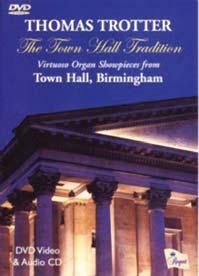
REGENT REGDVD001 + CD
Hollins Concert Overture No1
Festing Largo, Allegro, Aria & 2 variations
Thalben-BallVariations on a Paganini theme for pedals
Ketèlbey Bells across the meadows
CoatesMarch Youth of Britain
Anderson The Typewriter
Wagner Mastersingers Overture
WagnerRomance The Evening Star
Wagner The Ride of the Valkyries
Tchaikovsky 1812 Overture
David Halls
PRIORY PRDVD 8 + CD
Halls Salisbury Fanfare
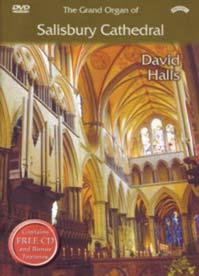
Bach Toccata in F BWV540
Alcock Andante Grazioso
Stainer Jubilant March
Lemare Andantino in D flat
Bush Trumpet March
Wood Sunrise on Stonehenge
Handel Largo from Xerxes
Howells Rhapsody No 2

Bach Wachet Auf BWV645
Peeters Toccata, Fugue & Hymn on Ave Maris Stella
Coates Dance in the Twilight
Vierne Carillon de Westminster
DVDs recorded in 16:9 widescreen PAL colour and 5.1 surround sound and stereo
The Regent DVD is the first produced by Gary Cole’s company and has been eagerly anticipated. It is also Thomas Trotter’s DVD début, featuring his highly authoritative approach to the wonderful, restored fourmanual Hill organ in Birmingham Town Hall. The camerawork is excellent, with a very revealing overhead shot, although the mercurial Trotter hands move so fast that they create a persistence of vision effect. This player really is the ultimate virtuoso and needs HD video quality to catch his finger movement. The Wagner and Tchaikovsky transcriptions use an incredible number of notes to create the orchestral texture, but the tempi and registration are superbly controlled and always respect the score. When GT-B played the Paganini variations for pedals on the BBC’s Compton pipe organ at Broadcasting House he complained about the sluggishness of the action, as did Trotter later in the 80s (and there is also a shot of TT and GT-B sitting together at the BH organ within the biographical Bonus Track). There is no such problem with this superb instrument! The programme is very
Music by Victoria
Harry Christophers & The Sixteen
CORO CORDVD 6
Sancta Maria
Salve Regina
Super flumina Babylonis
Tenebrae Responsory



Vidi speciosam
O quam gloriosum
Lamentation for Holy Saturday
Requiem 1605: Communio
Congratulamini mihi
Requiem 1605: Kyrie
satisfying, contrasting light pieces with heavier; the Leroy Anderson is delightfully frivolous, I can just visualise TT performing on an Imperial! The entire programme here is performed from memory and always registered with perfect judgement: good taste is never compromised. Thomas Trotter is the living proof that it is not necessary to take liberties with the music to give an exciting performance on the organ. There is an assurance and precision in these performances which is breathtaking, making one impatient for the next selection. In the Bonus Tracks, the organ is shown off by its master, who improvises or pulls deft, ad hoc passages out of his prodigious memory to display all the distinctive stops. In another track we learn that there were no organists in the family and Thomas found his own way to achieve his present mastery of the instrument, starting lessons at the age of eleven, eventually winning an organ scholarship to King’s College Cambridge under Philip Ledger. An early mentor was FCM President Christopher Robinson, followed by a number of distinguished teachers. All this information delivered
without affectation, from memory, with a relaxed eye-line to camera. You must get it!
In the eighth Priory cathedral organ DVD, Salisbury’s Director of Music David Halls plays a delightful programme, each piece having links to the cathedral or its county and demonstrating the distinctive qualities of this unaltered 1877 ‘Father’ Willis organ. He opens with his own rather majestic Salisbury Fanfare, using the 8’ Solo Tuba. The Bach Toccata has two famously challenging pedal solos, in which we see the organist’s feet making light of the triplets with great economy of movement. He could give us a master-class on the art of pedalling any time.

In fact why stop there, his calm and confident approach to playing make David Halls an ideal presenter for a DVD on organ playing. The sound balance is especially good, placing the organ in the centre of the huge reverberant space, with perfect clarity. The specially shot cutaways are delightful, whether architectural, rural or floral. The opening titles are presented in an original way, over white background shots on which the colour is faded in. On the Bonus Tracks this organist reveals an ability to entice us to love this organ as much as he does, and in his guide to the console and the stop-list he holds our attention as he unpacks it all. Any organ lover viewing will want to rush down to the cathedral to hear this vintage Father Willis live and feast their eyes on the pure Early English Gothic architecture (1220), superbly shown in the cutaways, all built in the same style and, like the organ, unaltered. Take note, David in fact studied with Thomas Trotter, which helps to explain his assured technique and virtuoso style.
On my third DVD no organ is required. To mark the 400th anniversary of the death of his favourite Renaissance composer, Harry Christophers leads his a cappella choir, The Sixteen, in a 60-minute programme of music by Victoria. A product of the Spanish Golden Age, Victoria’s composing years bridged the Renaissance and Baroque periods in music. The music is sung in the magnificent spaces of the church of San Antonio de los Alemanes in Madrid (1606), which provides a superb acoustic and very colourful baroque décor for the performance. Renaissance polyphony all has a timeless aura of peace and, as if to underline this, the producer has created sound loops at junctions where options are offered, so if you are not looking at the screen you will not realise you are on a loop, until, after several passes, your ear detects you have heard the passage before! This disc trains you to listen thoroughly to vocal polyphony, rather than to let it wash over you. It takes time to discover how much is on the DVD, there is no track index nor road map; there is no booklet, only a leaflet. The avuncular presenter is a former St Paul’s Cathedral chorister, Simon Russell Beale, who guides us through the music’s origins while Harry Christophers tells us about the music itself. Christophers is an excellent speaker, as well as a leading choral director in the field. Bonus Tracks offer comments from the singers and excerpts from related CDs plus a trailer for the previous Sacred Music series. The quality of this new production is stunning!

Robert Dufton
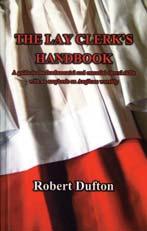
CreateSpace Independent Publishing Platform


(£12 at Amazon)
ISBN- 9781466374690
Having aspired to be and then become a lay clerk myself at Ripon Cathedral, I was fascinated to see what I believe is the first treatise on the role and particularly interested in what Robert Dufton had to say. How, I thought, could a book illustrate the varied roles involved in being a lay clerk with the nuances of not just the different styles of music, but the whole aspect of what the job entails? Although quite young, Dufton has had enough experience to write knowledgeably on the various issues that face lay clerks in their duties singing in a cathedral choir. All the nittygritty is covered, from how to fit singing in with a full-time job, managing rehearsals that invariably are cut to the quick and still being expected to perform at the highest standard, to acknowledging and accepting the different requirements of directors of music (let alone the church body you work for)... the list is endless! Personally, I did it ‘cold’ at Ripon, and somewhat like the roller-coaster rides at the nearby Lightwater Valley Theme Park, the experience was just as exhilarating and full of adrenalin, week-by-week, year-on-year. Dufton’s book goes to great lengths to explain the intricacies and high standards required of being a cathedral lay clerk, not just in musical terms, but that of being part of ‘The Establishment’. As a job, it is without doubt a most wonderful, inspiring and valuable life experience. Dufton is to be applauded for writing a book that will assist the desirous/curious and will help in those first steps towards an audition.
Graham Hermon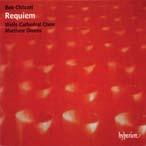
Music by Bob Chilcott
Requiem; Salisbury Motets (I sing of a maiden; When to the temple Mary went; Lovely tear of lovely eye; Hail, star of the sea most radiant); Downing Service; Pilgrim Jesus; The Nine Gifts; Jesus springing.
The Nash Ensemble
Soprano: Laurie Ashworth
Tenor: Andrew Staples
Organ : Jonathan Vaughn
Conductor : Matthew Owens
HYPERION CDA67650 TT 79:39

There are so many riches to savour on this CD that it is difficult to do it full justice in a short review. Bob Chilcott’s great gifts as a choral writer and communicator are to the fore in his Requiem He himself acknowledges his debt to other composers and, indeed, it is hard not to hear overtones of Fauré and Duruflé in his sensitive avoidance of the vengeful aspects of the text, especially in the Offertorio. The work may be experienced on
several levels – the exuberant dance of the Sanctus is balanced by the prayerful Agnus Dei and Luxaeterna movements. The masterstroke comes, for this listener, with the inclusion of Thou knowest, Lord, the secrets of our hearts – a profound plea for the living amidst the prayers for the departed. This Requiem speaks to the heart in a most moving way.
The Salisbury Motets are taken from Chilcott’s large-scale Salisbury Vespers. The texts are Marian, reflecting the dedication of Salisbury Cathedral to the Virgin Mary. Outstanding among the motets is Lovely tear of lovely eye, an imaginative setting of a medieval poem (with distant tubular bell in the background). The Downing Service is an approachable setting of the evening canticles written for the Cambridge college.
The three final tracks are prime examples of a meeting of minds between two artists. Chilcott responds to Kevin CrossleyHolland’s poetic imagination with music interpretations of three fine carols.
This is a wonderful CD – a triumph for the composer, certainly, but also for Matthew Owens and his musicians in their championship of contemporary church music. A must!
Alan Spedding
Mozart Missa Brevis in D major,K194; Tallis Loquebantur variis linguis; White Ad te levavi oculos meos; Philips Christus resurgens ex mortuis; Blow Salvator mundi; Purcell Jehovah, quam multi sunt; Handel As pants the hart; Jackson Come, thou holy Paraclete, Op 85; Dove Into thy hands.
The Choir of the Grosvenor Chapel
Director and Organist: Richard Hobson
Organist: Joseph Sentance
REGENT REGCD351 TT 64:32
The Choir of the Grosvenor Chapel consists of five consort singers and is augmented for feast days, special services and concerts. They sing a Mass every Sunday morning and are accompanied by the fine 18th century-style William Drake organ, or a small continuo instrument by Robert Jennings. In common with many other London churches, Evensong is not sung in the chapel.
The chapel acoustic serves the performers well and there is refined solo singing from several members of the consort. The Mozart Mass is accompanied by four solo strings and continuo and the main organ features in the Jackson anthem. Handel’s As pants the hart is more often heard as one of the Chandos Anthems, with orchestral accompaniment. Here it sounds fresh and verse-like in the early version, accompanied by the chamber organ only. Equally effective is Francis Jackson’s Come, thou Holy Paraclete, written for the dedication of the chapel organ in 1991 and in which the resources of the organ as an accompanying instrument are exploited. Jonathan Dove’s Into thy hands shows the choir at its sensitive best. The whole programme is a most satisfying sample of the musical delights at the service of the members of the congregation of the Grosvenor Chapel, Sunday by Sunday – how fortunate they are! Alan Spedding

We provide all types of new instruments
New Organs
Restoration
Rebuilding
Tuning
Maintenance
We can give unbiased advice for all your requirements

Hillside Organ Works

Carrhill Road, Mossley, Lancashire OL5 0SE Tel: 01457 833 009
Fax: 01457 835 439
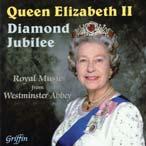
Royal Music from Westminster Abbey
Purcell Trumpet Tune; Handel Zadok the Priest; Hymns: Love Divine; O God, our help in ages past; Make me a channel of your peace; Christ is made the sure foundation; Let all the world in every corner sing; Guide me, O Thou great Redeemer; I would be true; Be Thou my vision; I vow to Thee, my country; Anon Rejoice in the Lord alway; Handel Air from the Water Music; Psalms 23, 91; Stanford Gloria in excelsis; Britten Jubilate in C; Howells Behold, O God, our great defender; Dyson Be strong and of good courage; Walton Orb and Sceptre march; Fanfare and National Anthem.
Westminster Abbey Choir; London Brass; English Chamber
Orchestra
Director: Martin Neary
Organists: Martin Baker, Iain Simcock
GRIFFIN GCCD 4077 TT 77:10
Do I detect a whiff of opportunism in the issue of this compilation CD in Jubilee year, or am I being unduly cynical?
Giving the CD a Diamond Jubilee title, let alone Royal Music from Westminster Abbey, does not necessarily guarantee success, so what marks out this disc from the rest? You have to wonder what is ‘royal’ about the hymn Make me a channel... and the same question could be levelled at much of the contents of this disc. The booklet has some surprises – Britten’s Jubilate in C is apparently performed by a treble and an oboist, as is the Air from the Water Music suite – one of several howlers. The archive has been dredged back to 1988 for this CD. As you may have already realised, this disc is not for me.
Roger Judd
Lassus: Aurora lucis rutilat;Timor et tremor; Magnificat secundi toni super Praeter rerum seriem; Magnificat octavi toni super Aurora lucis rutilat; Josquin: Praeter rerum seriem; Huc me sydereo; O Virgo prudentissima; Brumel: Gloria and Sanctus from Missa Et ecce terraemotus.

The Sixteen Director: Harry Christophers
Assistant Conductor: Eamonn Dougan CORO COR16097 TT 61.07
This admirable programme could well have been entitled The Musical World of Roland de Lassus (Orlando di Lasso) 1532-94.
Lassus admired and performed the monumental 12-voice Earthquake Mass by Antoine Brumel (1460-1512/13) of which the Gloria and Sanctus are given on this CD.
Based on the Easter plainchant Et ecce terraemotus, it gives a dramatic and literal representation of the text ‘There was a great earthquake and the Angel of the Lord rolled back the stone from the door of the sepulchre’. Lassus’s great admiration for Josquin des Prez (1452-1521) inspired him to base a Magnificat on Josquin’s strange and expressive motet Praeter rerum seriem (Outside the natural order a virgin yet a mother gave birth to God as man) and finally we have Lassus basing Magnificats on his own motets. Everything had to be based on something else in those days!
Did The Sixteen make the earth resound? The performances, directed by Associate Conductor Eamonn Dougan, with an incapacitated Harry Christophers acting as a back-seat driver, bear all The Sixteen’s familiar hallmarks of impeccable tuning, immaculate ensemble and silky-smooth blend. The result is, unfortunately, a little bland for such quirky, passionate music as Brumel’s Mass. I have been known to say to my singers that I do
not like this sort of music to sound as if it has been ironed, if you take my meaning. So I would describe this CD as fine but not outstanding, with an unusually well-constructed programme for which it is certainly worth buying.
Timothy StoreyThe Choir of King’s College, London Conductor: David Trendell Missa in lectulo meo; Motets; Miserere; Missa Christus resurgens.
DELPHIAN DC34103 TT 72:15
The music on this CD was a revelation to me. The famous and oft-recorded Miserere aside, what other music by this composer do you know? This then is the disc to broaden your knowledge. The Choir of King’s College, London under their director, David Trendell, present two Masses with their associated motets, and the Miserere. The singers are a lively ensemble, and the music is vividly brought to life with nicely sprung rhythms and excellent intonation. Both Masses are scored for eight-part choir, and one must hope that they will be taken up by other choirs, to go alongside more regular fare of Palestrina and Victoria. Delphian has done a fine job with the recording in the church of St John Upper Norwood, London. All in all, a most rewarding experience, and one I hope that you’ll share. Warmly recommended.
 Roger Judd
Roger Judd
Selva morale e spirituale Vol II
Laudate Dominum; Confitebor tibi Domine; O ciechi, ciechi; Jubilet tota civitas; Messa à 4 da cappella; Deus tuorum militum; Sanctorum meritis; Crucifixus; Laudate Dominum in sanctis eius; Et iterum venturus est; Ab aeterno ordinata sum; Dixit Dominus.
The Sixteen Director: Harry Christophers CORO 16101 TT 70:32
Harry Christophers’ group The Sixteen draws on some of the finest singers around for this music, and the disc is a delight in every respect. For one thing the variety of Monteverdi’s music never ceases to amaze in its invention and vitality, and the singers rise to every challenge with relish. Supporting the singers is a small continuo group of violins, ’cello, chitarrone, harp, organ and harpsichord which adds richly to the mix. I would be happy to purchase the disc for only two of the tracks – a wonderful Dixit Dominus and an extraordinary solo bass Ab aeterna ordinata sum –the remaining tracks would be a bonus! Warmly recommended.
Roger Judd
Greek Catholic Seminary Choirs recorded in Lviv, Ukraine. (Aid to the Church in Need)
HERALD HAVPCD 373 TT 73:55




The Greek Catholic Church consists of those Eastern churches which follow the Byzantine liturgical tradition and are in full communion with Rome and the Pope. On 6th December 2008 a great festival of choirs of Greek Catholic seminaries, attended by choirs from the Ukraine, Poland, Slovakia and Germany, marked the 225th anniversary of the founding of the Seminary of the Holy Spirit in Lviv, Ukraine, in 1783. This was an event of real significance for Greek Catholics since the Lviv Seminary had been liquidated by the Soviet authorities in 1945 when all Ukrainian Greek Catholic

bishops were arrested. The seminary remained shut until the fall of Communism, but was re-opened in 1990.
Eight seminary choirs (mainly of male voices) sing a range of liturgical music, mostly in chant form in minor modes, harmonised with root position chords. The choirs sing with fervour and intensity with some well-executed solos, but there are some passages when the tonality is not entirely secure. Apart from naming the choirs and the twenty-eight individual items, there are no explanatory programme notes.
Alan Spedding
Medieval and Renaissance music inspired by the British Library Exhibition
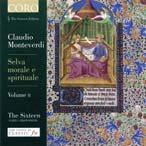
Browne Salve Regina; Wylkynson Jesus autem transiens; Anon Hail Mary, full of grace; Pygott Quid petis, o fili?; Anon Lauda; Regina sovrana; Cornysh Ave Maria, Mater Dei; Anon This day dawes; Richard Davy Stabat Mater; Anon Christus surrexit; Dufay Agnus Dei; Tallis Spem in Alium.
The Sixteen
Director: Harry Christophers
The Hilliard Ensemble CORO COR16098 TT 74:26
This CD was compiled to accompany the stunning exhibition of illuminated manuscripts from the Royal Collection mounted early in 2012 at the British Library. Many of the images in the exhibition were familiar from being reproduced as book illustrations or greetings cards, but the chance to view the originals was an enthralling experience. The sumptuous work of calligrapher and artist was a marvel of exquisite detail and the sheer size of some of the volumes was a further surprise. The exhibition included manuscripts from the 8th to the 16th century. This compilation, taken from previous recordings, does not feature items from the Royal Collection specifically and covers music mostly from the 15th and 16th centuries. As with any Sixteen or Hilliard Ensemble performances, quality is assured. (The exhibition catalogue is still available…)
Alan SpeddingQuaesumus omnipotens et misericors Deus; Missa Euge bone; Give almes of thy goods; Christ rising; Peccavimus cum patribus nostris; Western Wynde Mass; Nunc dimittis.
The Choir of Westminster Abbey
Conductor: James O’Donnell
HYPERION CDA 67928 TT 73:49
Most members of traditional church choirs will associate Tye with some agreeable little four-part anthems such as O come, ye servants of the Lord, O God of Bethel and Holy Spirit, Lord of grace, but though this music is 100% Tye, the words are a later addition, Tye having composed it for his rather quaint Common Metre versification of the first fourteen chapters of the Acts of the Apostles, a sign of his enthusiasm for the post-Reformation emphasis on the study of the Bible. He was an almost exact contemporary of Tallis. Both men first composed music to suit the rather austere requirements of Edward VI’s reign, then Latin works for the Marian counter-Reformation, and the slightly more expansive English liturgy of Elizabeth I’s reign. Tallis adhered to the old religion, but became the leading figure of the Chapel Royal; Tye worked in the cathedral and diocese of Ely.
Of the two Latin masses on this CD, Western Wynde is an example of the rather naughty pre-Reformation practice of basing a mass on a secular tune. The tune in question is

undeniably beautiful, but a very secular love song. Tye’s setting follows that by Taverner, who places the tune anywhere but in the alto part: Tye’s altos have the tune all to themselves, over and over again! By contrast the Euge bone mass, though undeniably grand, is a much more concise affair, an example of the ‘purer’ style characteristic of the later sixteenth century, and not escaping the influence of the various reforming movements.
So this is a fascinating programme, sung in the Abbey choir’s usual immaculate style, which I recommend warmly to lovers of this music and admirers of this wonderful choir.
Timothy Storey
Harry Christophers conducts the Handel and Haydn Society




Mozart Ave verum corpus K618; Requiem K626; Per questa bella mano K612
CORO COR16093 TT 53:59
The Handel and Haydn Society is America’s oldest continuously performing arts organisation, having been founded in 1815; it comprises a period instrument orchestra and a choir of around 36 voices. Harry Christophers has been Artistic Director since the 2009/10 season and has conducted the Society each year since 2006. The works on this disc need no introduction with the possible exception of Per questa bella mano for which there is a spoken introduction on the CD. Of particular interest to readers of CATHEDRAL MUSIC will be that the soprano soloist, Elizabeth Watts, is a former chorister of Norwich Cathedral. The tenor soloist, Andrew Kennedy, is also from the UK. The performance itself is of the highest standard with well-judged tempi and carefully crafted dynamics.
Tim Rogerson
Stephen Layton conducts the choir of Trinity College Cambridge
Howells A Hymn for St Cecilia; Salve Regina; Gloucester Service; Take him, earth, for cherishing; St Paul’s Service; Requiem; All my hope on God is founded.
HYPERION CDA67914 TT 64:09
Following closely behind the Hyperion disc of Howells’ music from Winchester reviewed in this publication last year comes this recording from the Choir of Trinity College Cambridge. The accompanied pieces were recorded in Lincoln Minster, whilst the performances of the unaccompanied items were captured in the Lady Chapel of Ely Cathedral.
The two sets of evening canticles presented here and Take him, earth, for cherishing are well-known works which are performed regularly by most cathedral and chapel choirs. The remaining works are less well known. The Hymn for St Cecilia is a setting of words by Ursula Vaughan-Williams commissioned by the Worshipful Company of Musicians in 1960 when Howells was Master of the Company. Salve regina dates from 1916 and is one of Four anthems to the Blessed Virgin commissioned by R R Terry for the choir of Westminster Cathedral. The Requiem was composed in 1932 but not published until 1980 and is similar in structure to A Short Requiem by Walford Davies in that it takes for its text extracts from the Service of the Burial of the Dead from the Book of Common Prayer, the Latin Requiem and two Psalms (23 and 121), and is sung by unaccompanied choir.
The Choir of Trinity College Cambridge has for many years had a reputation for very high quality music-making, and this disc will only strengthen that deserved reputation. Do buy it!
Tim Rogerson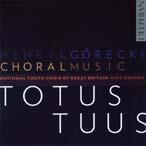
Euntes ibant et flebant; Lobgesang; Totus Tuus; Salve, Sidus Polonorum; Amen.
National Youth Choir of Great Britain Director: Mike Brewer
DELPHIAN LC 12979 TT 61:47





I would guess that readers of this magazine are sharply divided between those who find the minimalist compositions of such as Gorecki, Pärt and our own John Tavener slow, repetitive and boring and those who find great beauty and spiritual depth in these men’s music. To those readers in this second category, this disc is warmly recommended: it contains a sizeable bonus in the world premiere recordings of Lobgesang (Hymn of praise) and the lengthy Salve, Sidus Polonorum (Hail, star of the Polish people). The singing is uniformly excellent and the increasingly popular Totus tuus (I am wholly yours, O Mary) from which the CD takes its name is (for once) not taken too slowly, thereby gaining in urgency. No choral concert in this year’s Proms seemed complete unless it featured a Youth Choir, testimony to the success of the movement spear- headed by Mr Brewer and his singers.
If you are sure you will like it, add this fine CD to your collection.
Timothy StoreyWeelkes Alleluia; Moore All wisdom cometh from the Lord; Handel Rejoice greatly; Byrd
Teach me, O Lord; Mendelssohn Hear my prayer; Stainer God so loved the world; Vaughan Williams O taste and see; Lotti Crucifixus à 8; MacMillan A New Song; Weakley May the grace of Christ our saviour; Stanford For lo, I raise up; Rose Surely thou hast tasted that the Lord is good; Cox War in heaven; Ireland Greater love; Brahms Geistliches Lied.
The Choir of Southwark Cathedral
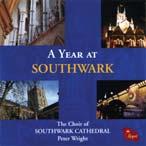
Director: Peter Wright
Organ: Stephen Disley
REGENT TEGCD 376 TT 78:24
I recently heard a similar CD from Winchester Cathedral, and this one from Southwark adopts the same pattern. A fine and varied repertoire is presented, taking the listener through the liturgical year, and one fascinating and excellent aspect of the disc is that no fewer than six of the choir’s trebles take on a solo rôle. Highlights for me from this disc are the piece by Moore, a remarkably assured Mendelssohn Hear my prayer, Stanford’s For lo, I raise up sung with relish, and Neil Cox’s War in heaven, a really fine addition to the Michaelmas repertoire. In all this, the choir is supported with great skill and ear for colour by Stephen Disley. Peter Wright has devoted over 20 years to sustaining and enhancing the musical life of the cathedral, and this CD is a fine testimony to that dedication. Recommended.
Roger JuddHymns New and Old
by George HerbertMusic by Barry Ferguson, Simon Lole, Richard Shephard, Grayston Ives, Howard Moody, David Halls, Orlando Gibbons, Edmund Hampton, Alec Roth, J D Jones, Charles Collignon, Alexander Brent-Smith and Basil Harwood.
VIF VRCD077 TT 55:58
George Herbert is well known for writing the words to a small number of regularly sung and much-loved hymns, including Let all the world in every corner sing, Teach me, my God and King, and King of Glory, King of Peace. In 2007, however, a group from

Bemerton, Salisbury, where Herbert was Rector from 1630 to 1633, invited a number of composers (most of whom had a connection with Salisbury) to write new hymn tunes for some of his other poems and these were published by the RSCM. This disc presents these pieces, together with pre-existing works performed by Sarum Voices, conducted by Ben Lamb and accompanied by Cathy Lamb and recorded in St Martin’s Church, Salisbury. The pieces are varied, each taking in the character of the words, and the standard of singing is good, with judicious variety of texture for the longer hymns (some verses sung by men only, others by women). My only criticism is that there is no information about the musicians in the CD booklet.
Tim RogersonSacred Choral Works by Stephanie Martin

Hear my prayer; Kontakion; God so loved the world; Missa Lumen; Alleluia; O sacrum convivium; Ave verum corpus; Mass for three voices; Tantum ergo; O saving victim; At thy great name; Therefore we, before him bending; Hymn: In Magdalenae nomine.
Choirs of the Church of St Mary Magdalene, Toronto, Canada
Director: Stephanie Martin
MAPL SJM 008 WRC8-8166
The distinguished musician Healey Willan was appointed Precentor of St Mary Magdalene, Toronto in 1921 and remained in post for forty-seven years. He was able to put into practice his ideas and aspirations for liturgical music within the framework of a High Anglican tradition. Stephanie Martin has been at pains to continue the tradition, composing for the two choirs, Gallery and Ritual (Chancel). Much of the music on this CD favours women’s voices. Both of the masses are for upper voices, as is the gentle one-word Alleluia setting and most of the items use familiar (mostly Latin) texts. Most performances are unaccompanied, but effective use is made of flute and oboe obligato in God so loved the world. Martin’s music, like Willan’s, has its roots in plainchant and Renaissance music and has a serene quality overall.
The CD is clearly a team effort and one gains the impression that conductor and choirs are in a state of mutual understanding and appreciation.
Alan Spedding20-36
The Choir of Salisbury Cathedral Director: David Halls
Organ: Daniel Cook
PRIORY PRCD 1058 TT 75:06
Following the first disc in this series, which presented the Psalms for the first three days of the month sung by Exeter Cathedral Choir, this offering from the boys and men of Salisbury Cathedral Choir takes us from the fourth morning to the seventh morning. One of the stated aims of this series is to use chants not previously recorded and in doing so to have a ‘local slant’ on the selection. Accordingly, on this disc there are several chants by composers who have been associated with Salisbury Cathedral, including a delicious one by the present Director of Music, David Halls, and an equally gorgeous one by Sir Walter Alcock. The singing is of an impressively high standard and whilst quite a wide dynamic range is achieved, the approach adopted ensures that the meaning of the words is not overshadowed by unnecessary idiosyncrasy. Characteristically colourful accompaniments are provided by Daniel Cook, who takes full advantage of the Willis organ’s wide tonal spread and manages to feature the Tuba (‘the horns of the unicorns’) and
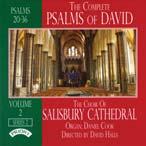
(very briefly, twice) the 32’ reed. All serious supporters of cathedral music should have a copy of this disc and should be eagerly awaiting the future releases in the series.
Tim Rogerson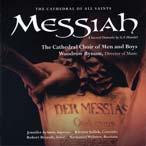
The Cathedral Choir of Men and Boys, All Saints, Albany, New York
Director: Woodrow Bynum
TT 2hr 19m
Available as a digital download from www.Amazon.com and from www.cdbaby.com as a 2-CD set.
Such is the fame of John Scott’s choir at St Thomas, Fifth Avenue that readers may be pardoned for thinking that that is the only all-male church choir in New York. This recording is proof enough that there is another very decent all-male establishment at the Cathedral of All Saints. It is an admirably balanced and well-blended ensemble, and I particularly admired the boys’ natural, unforced tone. The performance has many virtues and is a fitting testimony to the high standards attained at All Saints without benefit of a residential choir school.
It is a ‘safe’ performance, with most tempi held steady; though while Let us break their bonds asunder is given its head with electrifying effect, For unto us a child is born is by contrast remarkably slow. The solos are competently delivered, the ladies in my opinion being out-classed by the men, though the bass treats us to the all-too-familiar scamper through The people that walked in darkness, as though we are having an amiable jog round the park rather than feeling our way through the gloom.
This performance should not be set against the high-octane versions with internationally famous choirs and soloists. It is very decent and enjoyable within its obvious limitations, and I recommend it on that basis.
Timothy StoreyFrederick Hohman plays the Great Organ of the Methuen Memorial Music Hall
CD: Mozart Fantasia in F minor K608; J S Bach Toccata and Fugue in D minor BWV 565; DeGrigny Récit de Tierce en Taille; Schumann
Canon No. 4 in A flat major; Brahms Prelude and Fugue in G minor WoO10; Franck Prière; Handel Hornpipe; Sowerby Comes Autumn Time; Dupré Variations sur un Noël
DVD: Bach Prelude and Fugue in B minor BWV544; Vierne Scherzetto; Grieg Morning; Widor Finale (Symphonie II); Mulet Tu es Petra; Rachmaninoff Vocalise; Wagner The Ride of the Valkyries

PRO ORGANO CD 7234 TT CD 79:29 DVD 85:03
Two separate stories here. The Organ of Methuen Memorial Music Hall was built in 1863 by E F Walcker of Ludwigsburg, Germany for Boston Music Hall. In 1897, in order to free up space on the stage, the organ was sold at auction to Edward Searles, the owner of the Methuen Organ Company. Having bought the organ, Searles had a hall built to house it and he called this hall Serlo Hall. When Searles died the hall was inherited by Arthur Walker and on his death the hall was bought by Ernest Skinner, one of America’s most famous organ builders. In 1942, he defaulted on a mortgage and ownership of the hall passed to his bank. After the Second World War the hall was bought by a group of local citizens and ownership passed to a non-profit organisation, which continues to own the hall and maintain the organ to this day. The organ was rebuilt in 1947 by the Aeolian-Skinner Organ Company and is a four-manual instrument with 85 stops and just over 6,000 pipes.
Frederick Hohman is not only an organist, but also a producer of audio recordings and a television presenter. As well as having made a number of recordings of his own playing, he has produced over 200 recordings and presented a television show about the pipe organ which ran for five years in the USA. He gives polished and competent performances of the (mostly wellknown) repertoire on the CD. These recordings all date from 1995. The main programme on the DVD was recorded in 2008 and contains not only the first four DVD items listed above but also Hohman’s informative comments about the pieces, a history of the organ, an extensive tour of the inside of the organ and a shorter tour of the console. The last three pieces of music on the DVD were recorded during a concert given in 1996.
All in all, an interesting CD/DVD set.
The Six Sonatas op. 65 Nos 1-6
James Lancelot plays the organ of Durham Cathedral
PRIORY PRCD 1071 TT 66:00
Tim RogersonIt is always a pleasure to hear a recording by an organist on an instrument that he has lived with for many years. James Lancelot’s programme of the six sonatas by Mendelssohn does not disappoint, and Paul Crichton has recorded the great organ in Durham Cathedral faithfully. The richness and tonal variety of the instrument, allied to the acoustic, make this a satisfying recital. However, that is not enough to persuade one to hand over the money! Lancelot’s performance of these well-known and oft-recorded pieces raises them above the routine. He invariably finds the ‘right’ tempi, and though I would not ordinarily want to listen to the sonatas one after the other, it is no hardship to do just that.
 Roger Judd
Roger Judd




The 1723 Abraham Jordan Organ of St George’s, Southall
Restoration music:
Blow Verse in D; Voluntary in D min; Anon Verse in G minor; Anon (Blow & Purcell)
Trumpet Voluntary in D; Purcell Voluntary in G, Z720; Voluntary in D minor, Z718; Hart Fugue in F.
Georgian music:
Greene, arr. Whitehead Overture to ‘Phoebe’; Roseingrave Voluntaries IV & VIII; Fugue I in F minor; Walond Trumpet Voluntary IV in D, Op 2; Pepusch Voluntary in C
William Whitehead (Organ)
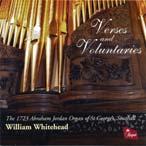
REGENT REGCD366 TT 68:25
William Whitehead is in sparkling form in this programme of Restoration and Georgian music played on the Mander reconstruction of the 1723 Abraham Jordan organ, now housed in St George’s, Southall. The organ, first built for St George’s, Botolph Lane, in the City of London, was lovingly restored to its original condition in 2009, thanks to the efforts of the congregation and the vicar. The delightful colours of the organ, from plenum to solo stops, are displayed in a variety of compositions, including eight movements of Pepusch’s twelvemovement Voluntary in C and Whitehead’s own transcription of Maurice Greene’s Phoebe overture – appropriately, since Greene gave the opening recital on the original organ in 1723.
The booklet gives full details of the organ’s history and the registrations in use in the recital, and John Collins contributes a full commentary on the programme. The organ is well recorded in the sympathetic Southall acoustic.
Alan SpeddingIan Hare plays the organs of The Great Hall, University of Lancaster and Cartmel Priory
S S Wesley: Choral Song and Fugue; Andante in E minor; S Wesley: Full Voluntary in D minor; Ouseley: Sonata in C minor; Elgar: Pomp and Circumstance March No. 4; Stanford: Fantasia and Toccata in D minor; Parry: Chorale Prelude on ‘Rockingham’; Willcocks: Variations on ‘Breslau’; Howells: Paean
PRIORY PRCD 1072 TT 71:54
Ian Hare has brought the technical skill and professional standards acquired during his time as Organ Scholar of King’s College Cambridge to the service of music in the Lake District and surrounding areas, to the extent that his name is virtually synonymous with music in this region. It is good to have his distinguished playing available on this CD.
The organ of Lancaster’s Great Hall is not as large or imposing as its location might lead us to expect, but its attractive, natural tone is ideal for an opening group of four pieces by Samuel Wesley and his son, the more famous Samuel Sebastian, whose familiar Choral Song is inevitably included. The remainder of this all-English programme was recorded on the Rushworth rebuild at Cartmel Priory and ranges from a (rather dull) Sonata by Ouseley to a set of hymn-tune variations by David Willcocks, Ian Hare’s old chief at King’s. These and works by Elgar, Stanford, Parry and Howells put the Cartmel organ through its paces and make for good, though not wildly exciting, listening. I am sure this anthology will be welcomed by Mr Hare’s admirers and those who would be glad to have a souvenir of that wonderful church at Cartmel. I am glad to recommend it accordingly.
Timothy Storey
Iain Farrington plays the Marcussen Organ in Tonbridge School Diptych for Derek Cooper; Suite for organ; Four Short Liturgical Interludes; Procession into light; Fanfares; Paean; Hymn Preludes; Palm Sunday Processional; P & F ‘The Phoenix of Johannesburg’; Prelude; Fugue.
HERALD HAVPCD 365 TT 01:11:46





I’m afraid that this CD didn’t excite me. The music doesn’t speak with a strong enough personality, all is rather bland and samey. Perhaps other ears will be more receptive. What is not in doubt is the artistry of Iain Farrington; a composer could not wish for a more persuasive advocate, and he uses the full resources of the fine Marcussen organ in Tonbridge School Chapel to great effect. I’m sorry that he couldn’t persuade me of the merits of this repertoire.
Roger JuddMargaret Phillips plays the Müller Organ of the Grote Kerk, Leeuwarden, The Netherlands
J S Bach Preludes and Fugues in D major BWV532, A minor BWV543 and D minor BWV539; Neumeister chorales BWV714, 719, 957, 1090-1120; Trios in C major BWV585 and D minor BWV583; Fantasias in C minor BWV562 and G minor BWV571; Fugue in G minor BWV578; Fantasia et Imitatio in B minor BWV563; Prelude in A minor BWV569; Trio Sonata No. 4 in E minor BWV528.

REGENT REGCD328 TT 152:29
The eighth volume in this splendid series takes the listener to Leeuwarden’s historic Müller organ built between 1724 and 1727 and restored most recently between 1972 and 1976. As in the other recordings in the series, the two discs in this set present a
variety of organ works. In this case the chorale preludes are those known as the ‘Neumeister Chorales’, which arrived in Yale in 1873 as part of the library of Lowell Mason, who had acquired the manuscript in 1852 from C H Rinck. The programme allows Margaret Phillips to take full advantage of the various solo stops and the excellent sleeve notes give details of the registration used for each piece. The playing is of the highest order and manages to combine an informed and scholarly approach with a truly musical performance and this is most evident in the three preludes and fugues which are played superbly. Highly recommended.
Tim Rogerson
Greg Morris plays the Organ of Blackburn Cathedral Leighton Et Resurrexit Op. 49; Three Fantasias on Hymn Tunes Op. 72; Missa de Gloria Op. 82

NAXOS 8.572601 TT 70:10
Like César Franck and Herbert Howells, Kenneth Leighton had a distinctive compositional style such that his music is almost always recognisable as his and the music presented here is no exception. The most well-known music on this disc will be the Three Fantasias on Hymn Tunes (in this case St Columba, Veni Emmanuel, and Hanover). Less well known will be Et resurrexit and Missa de Gloria. The former was written in 1966 and is (in the composer’s own words) “an attempt to give musical expression to the individual’s struggle for belief in the miracle of the Resurrection”. The Mass setting was commissioned for the Dublin International Organ Festival of 1980 and is based on plainsong chants of the twelfth-century Sarum rite. The choice of Blackburn Cathedral’s exciting Walker organ for this music is inspired and Greg Morris gives a committed performance which catches the mood of each individual movement.
Tim Rogerson
Thomson Joseph and the Angel; O my deir hert; The wise men; The flight into Egypt; Willis It came upon the midnight clear; Zuk Ye sons of men; Shaffer If ye would hear the angels sing; Hostis Herodes; Barnes The Lord at first did Adam make; Redner O little town of Bethlehem; Maclean Susannine; Murray Away in a manger; Tchaikovsky The crown of roses; Gubanov The garden of roses; Manning Two Tree Carols; Hopkins We three Kings; Bednall From heaven above to earth I come
The Saint Louis Chamber Chorus
Director: Philip Barnes
REGENT REGCD373 TT 79:36
Does your heart sink at the prospect of yet another Christmas album? Then, please, lay aside your prejudices and prepare to enjoy this admirable anthology chosen with great imagination and beautifully sung by this enterprising choir, which for the past 25 years has been directed by an Englishman who has integrated his singers into the cultural life of St Louis and further out into Missouri. Appropriately the programme is predominately American, which places it firmly off any track beaten by most readers of this magazine, I should have thought; but did you know (though they are inseparable from our celebration of Christmas, and we sing them to English tunes) that the words of It came upon the midnight clear and O little town of Bethlehem are American?
On this disc they are given with their ‘proper’ American tunes and we have for good measure that sturdy and oft-parodied import We three Kings of Orient are. This too is 100% American, despite again being such a fixture in the English Christmas.
The programme follows the Gospel narrative from the Annunciation to the Flight into Egypt, appropriately anchored by four movements from Scenes from the Holy Infancy by Virgil Thompson, a native of Kansas City, Missouri and ‘one of the towering figures of American classical music in the midtwentieth century’. The final tally is USA 10, Ireland 1, New Zealand 1, Russia 2, and UK 3, including works by the choir’s conductor and by the always welcome David Bednall, whose extended setting of From heaven above to earth I come rounds off the programme with great panache. With this and one or two other exceptions the mood is predominantly gentle, making this disc an admirable accompaniment to a quiet evening during the festive season. Be sure to buy it for yourself and add a few as stocking fillers for your friends.
Timothy StoreyNarrated by Richard Briers and performed by David Coram (organ) and David Owen-Norris (piano)
Prokofiev Peter and the Wolf; Saint-Saëns Carnival of the Animals; Poulenc The Story of Babar the Little Elephant
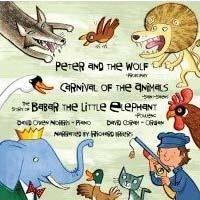
CATHEDRAL CLASSICS CCCD101
TT 79:59
And now for something completely different! Here is something else that might help to fill a stocking. Peter and the Wolf is performed by David Coram on the organ of Romsey Abbey using different organ stops for each of the characters just as the original version uses different instruments of the orchestra. The same approach is followed in Carnival of the Animals except that this time David Owen-Norris joins in on the piano and the narrator reads verses written by Ogden Nash before each movement. The final work on the disc will be less well known and came into being whilst Poulenc was in the company of his four-year-old niece who didn’t like what he was playing on the piano so asked him to play one of her Babar story books. This he did and subsequently wrote it down. It features the piano and a narrator. The question on the reviewer’s mind before listening to the two transcriptions on the disc was, “Will they work?” and the answer is a resounding, “Yes!”. In the Prokofiev, each character’s theme is clearly defined whilst
ROUND-UP OF CHRISTMAS CDS WHICH ARRIVED TOO LATE FOR REVIEW:
Christmas Music sung by the choir of Chester Cathedral
Director: Philip Rushforth
Organist: Benjamin Chewter
PRIORY
Choir of Merton College, Oxford
Directors: Benjamin Nicholas, Peter Phillips
Organist: Anna Steppler
DELPHIAN
St Mary’s Cathedral Choir, Glasgow
Director: Frikki Walker
Organist: Geoffrey Woollatt
OxRECS DIGITAL
in the Saint-Saëns the balance between the organ and piano is excellent. I especially enjoyed some of the colours produced by the organ in the Carnival. Babar is a delightful story in which the music is used to reinforce the storyline rather like the accompaniment for silent films. A lovely gift.
Tim RogersonHereford Cathedral Choir
Director: Geraint Bowen;
Organ: Peter Dyke
Trad, arr Vaughan Williams This is the truth sent from above;O little town of Bethlehem; Goldschmidt A tender shoot; Joubert There is no Rose; Ledger Adam lay ybounden; Manz
E’en so, Lord Jesus; Mendelssohn Lasset uns frohlocken; Frohlocket, ihr Völcker; Herr Gott, du bist unsre Zuflucht; Poston Jesus Christ, the apple tree; Adam arr Wilberg O holy night; Lloyd God from on high; An hymn on the nativity; Mathias Sir Christèmas; Wassail carol; Rutter Sing we to this merry company; Tavener The Lamb; Wishart Alleluya, a new work; Trad arr Willcocks Resonemus laudibus; O come, all ye faithful; Stewart On this day earth shall ring; Howells Here is the little door; Dyke Three Kings; Warlock Bethlehem Down; Mendelssohn arr Willcocks Hark! the herald angels sing.
REGENT REGCD388 TT72:22
Another disc of carols? Yes – and a good one! The informed choice of carols and the quality of the singing on this new disc from Hereford make it well worth buying. The beautifully blended voices, the balance between the choir and organ, and the choir’s ensemble are particular highlights. The way in which consonants are placed with complete unanimity is remarkable, nowhere more so than in Bethlehem Down. Works of particular note are the two compositions by Richard Lloyd, which were commissioned by the Frank Clarke-Whitfield Trust for the 2010 and 2011 Festivals of Lessons and Carols at Hereford. The lush arrangement of Adolphe Adam’s popular carol O holy night made by Mack Wilberg, director of the Mormon Tabernacle choir, also deserves mention. Most of the remaining works are well established favourites, all performed to a high standard.
 Tim Rogerson
Tim Rogerson
Christmas Music from Wells Cathedral
Director: Matthew Owens
Organists: Jonathan Vaughn, Owain Park


REGENT
A Ceremony of Carols/St Nicolas
Director: Stephen Layton
City of London Sinfonia
HYPERION
The Choristers of St George’s Chapel, Windsor Castle
Director: Timothy Byram-Wigfield
Organist: Richard Pinel
REGENT
The Choir of Rochester Cathedral
Directors: Scott Farrell/Samuel
Rathbone
REGENT
The Choir of Chichester
Cathedral
Director: Sarah Baldock
Organist: Timothy Ravalde
HERALD
Wakefield Cathedral Choir
Director: Thomas Moore
HERALD
The Choir of Queens’ College
Cambridge
Director: Silas Wollston
ORCHID CLASSICS



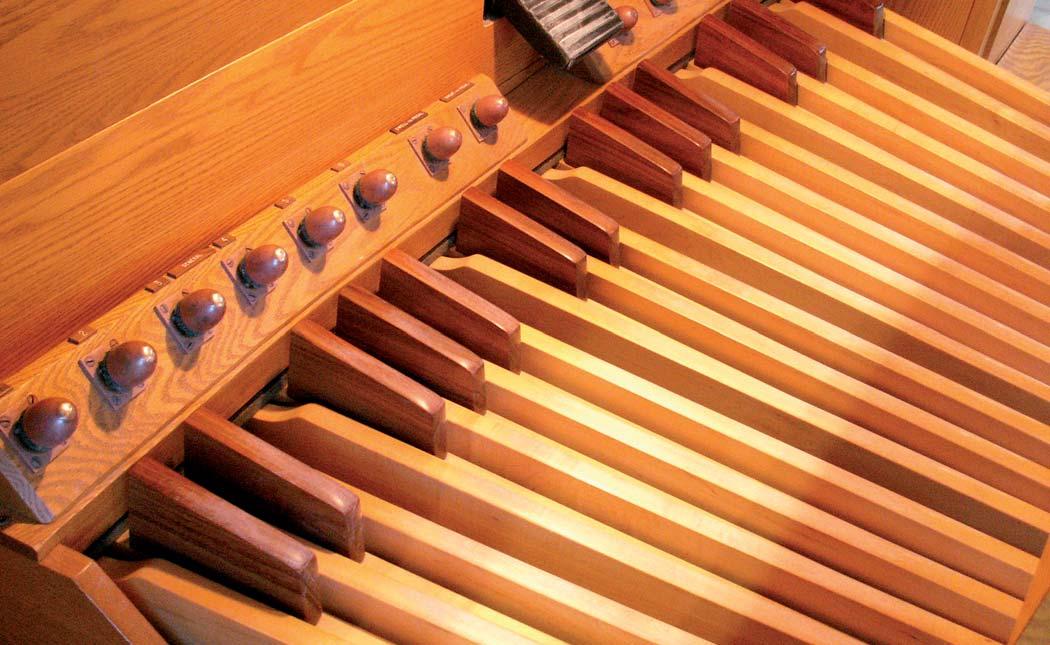















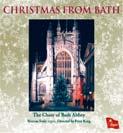


The Choir of Wells Cathedral directed by Matthew Owens, Jonathan Vaughn and Owain Park organ
An unusual and very festive collection of Christmas music both sacred and secular, old and new, from the choir hailed by Gramophone in December 2010 as the highest ranking choir with children in the world.

Music by Rutter, Ledger, Owens, Warlock, Poston, Leighton, Whitacre, Roberts, Gritton, and Park; arrangements by Allwood, Willcocks, and Wilberg.
The Choir of Hereford Cathedral directed by Geraint Bowen, Peter Dyke organ
An original selection of carols ancient and modern, including first recordings of two works written for Hereford Cathedral Choir, and charting the journey from Advent, through Christmas, to Epiphany.

Music by Goldschmidt, Joubert, Ledger, Manz, Mendelssohn, Poston, Lloyd, Mathias, Rutter, Tavener, Wishart, Stewart, Howells, Dyke, and Warlock; arrangements by Vaughan Williams, Armstrong, Wilberg, and Willcocks.
The Choir of Bath Abbey directed by Peter King, Marcus Sealy organ
A glorious collection of Christmas music, captured in Bath’s stunning acoustic. Many of the carols featured are original compositions, or new arrangements, from the recent Carols for Choirs Vol. 5, and are here receiving their first recording.
Music by Skempton, Shephard, Bullard, Archer, Ledger, Hewitt Jones, and Jackson; arrangements by Wilhousky, Willcocks, Chilcott, Scott, Blackwell, Sirett, Hill, Holroyd, and Wright.
The Choir of Rochester Cathedral directed by Scott Farrell and Samuel Rathbone, Roger Sayer organ
A sparkling Christmas disc of music old and new from this fine choir, with separate items showcasing the boys’, girls’ and men’s voices.
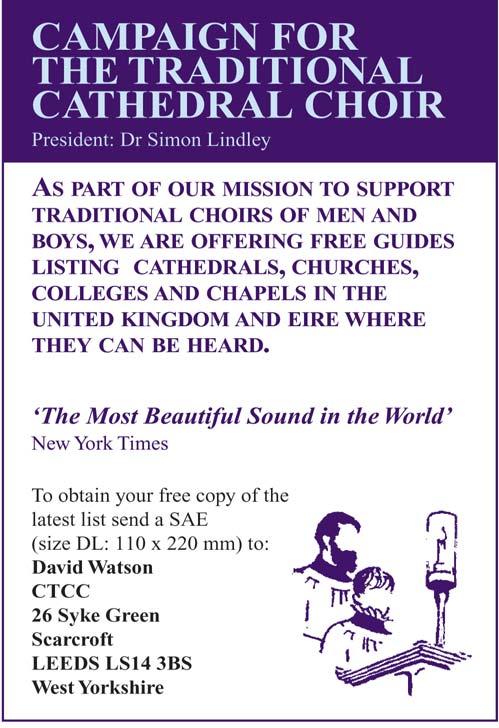
Music by Cooman, Joubert, Chilcott, Carter, Cornelius, Rathbone, and Mendelssohn; arrangements by Trepte, Willcocks, Vaughan Williams, and Pearsall.
The Choristers of St George’s Chapel, Windsor Castle Timothy Byram-Wigfield director and organ soloist, Richard Pinel organ
A wonderful showcase for the art of the boy chorister, combining traditional favourites with less well-known carols and Christmas music. The disc features both original Christmas music and arrangements for treble voice.


Music by Bairstow, Daquin, Britten, Rutter, Hadley, Stainer, Humperdinck, and Mendelssohn; arrangements by Willcocks, Sargent, Goodall, Pont, Shaw; organ music by Daquin, Lemare, Dubois, and Bach.
‘Few record companies have done more to champion our choirs and the instruments that accompany them than Regent Records’ Classic FM Magazine
